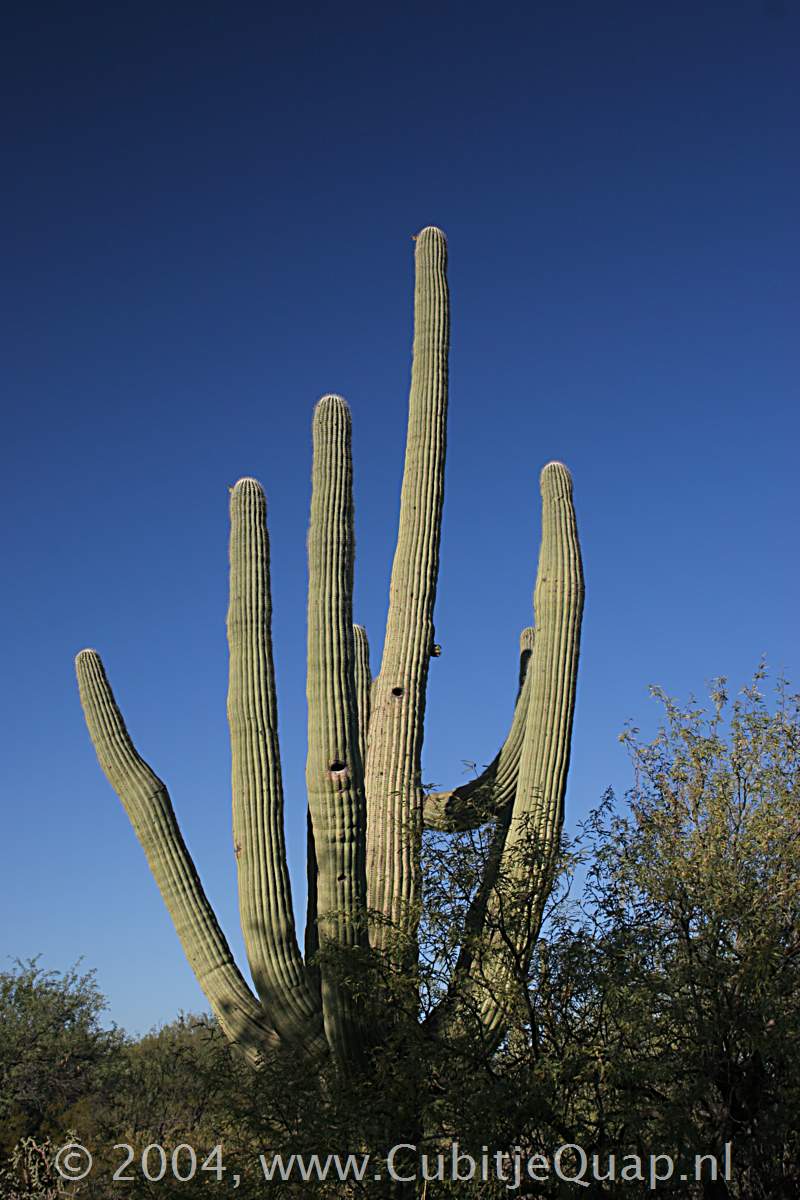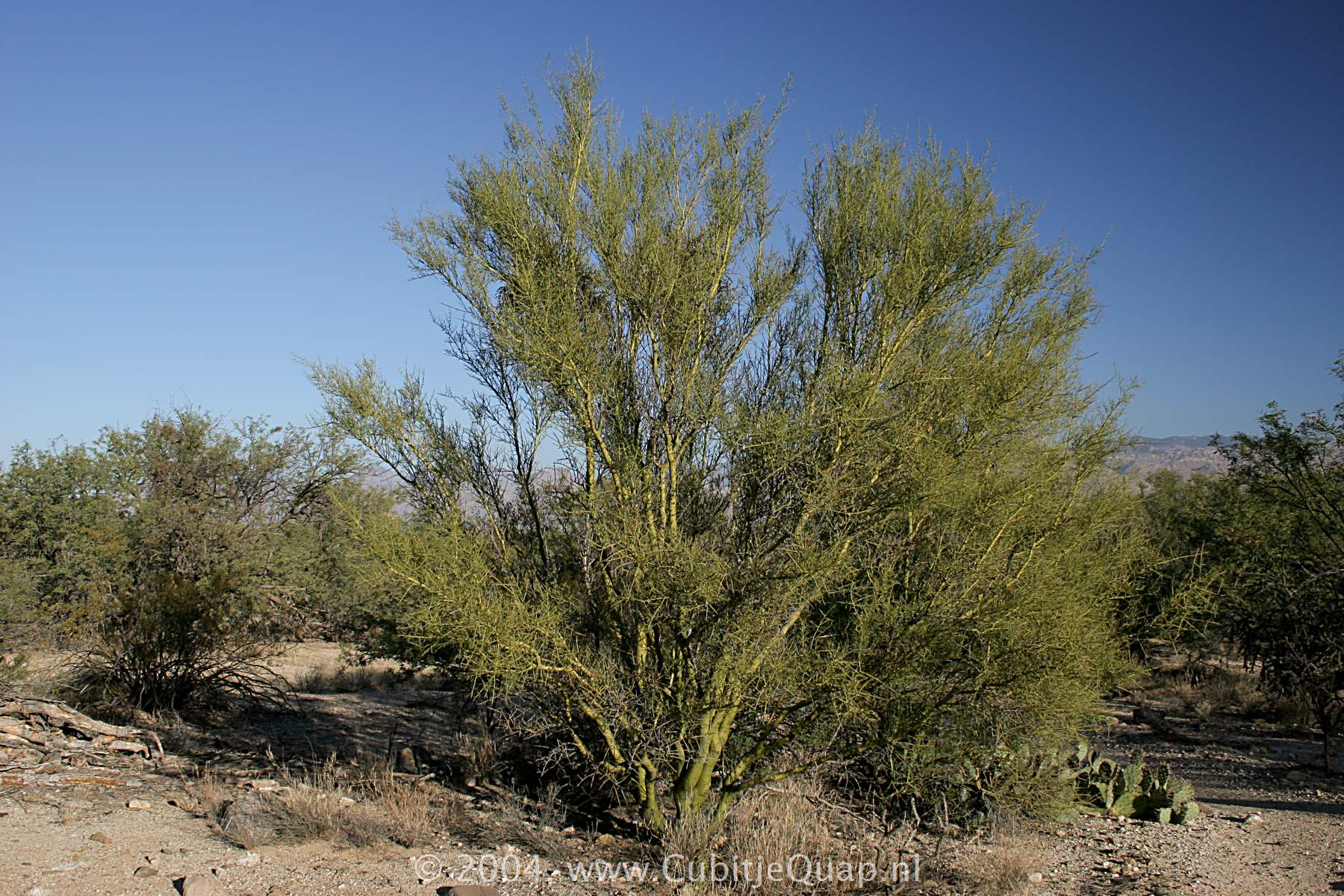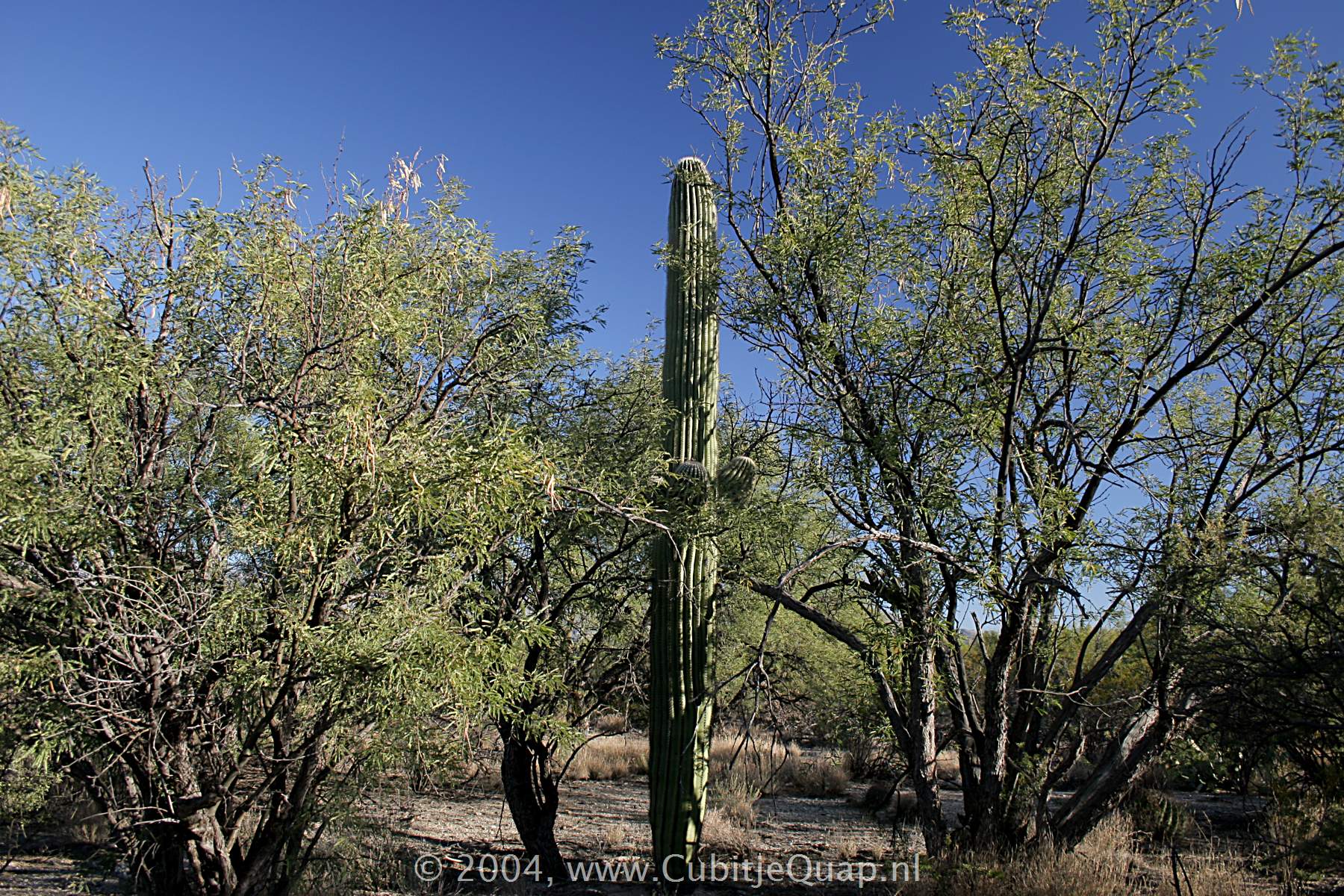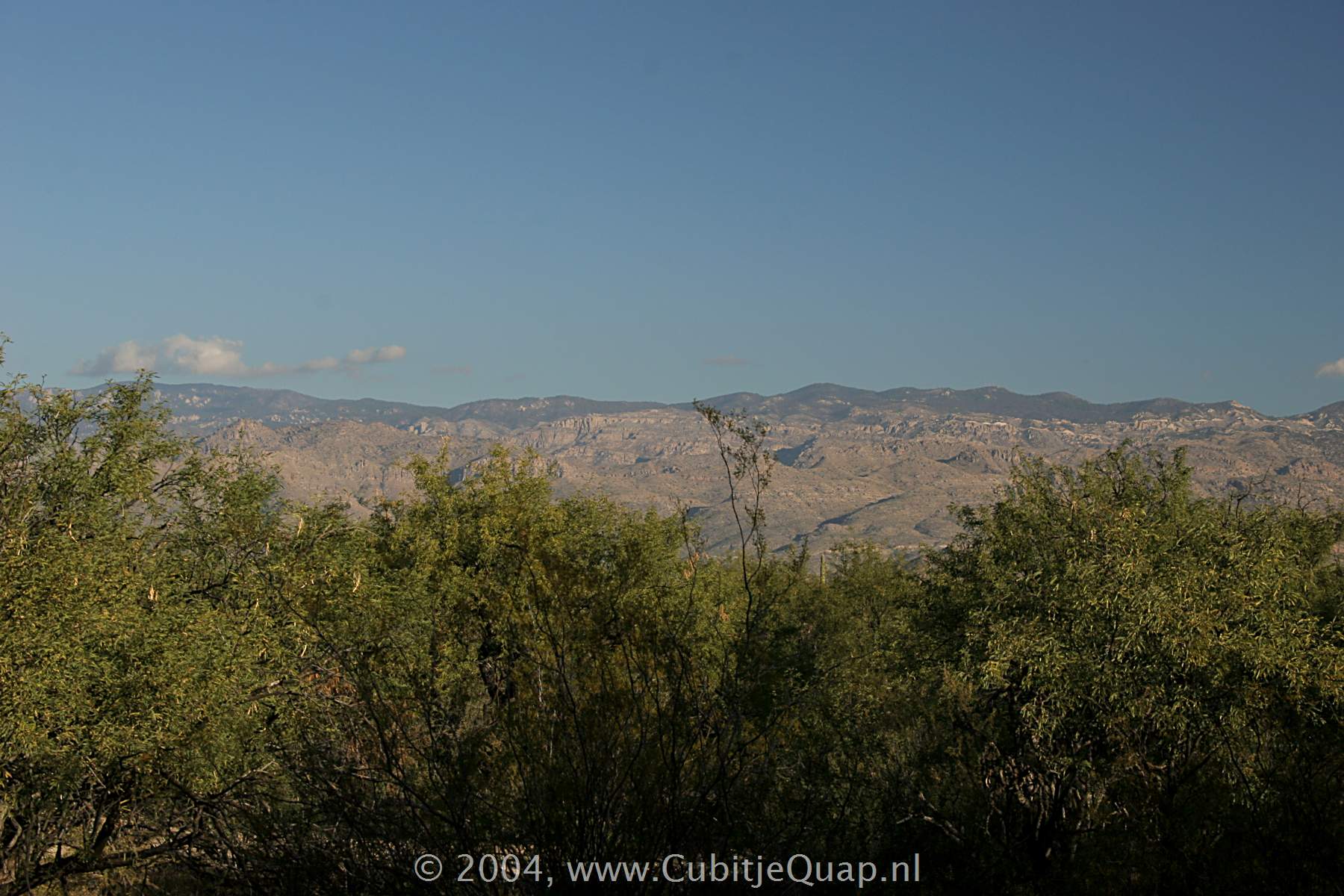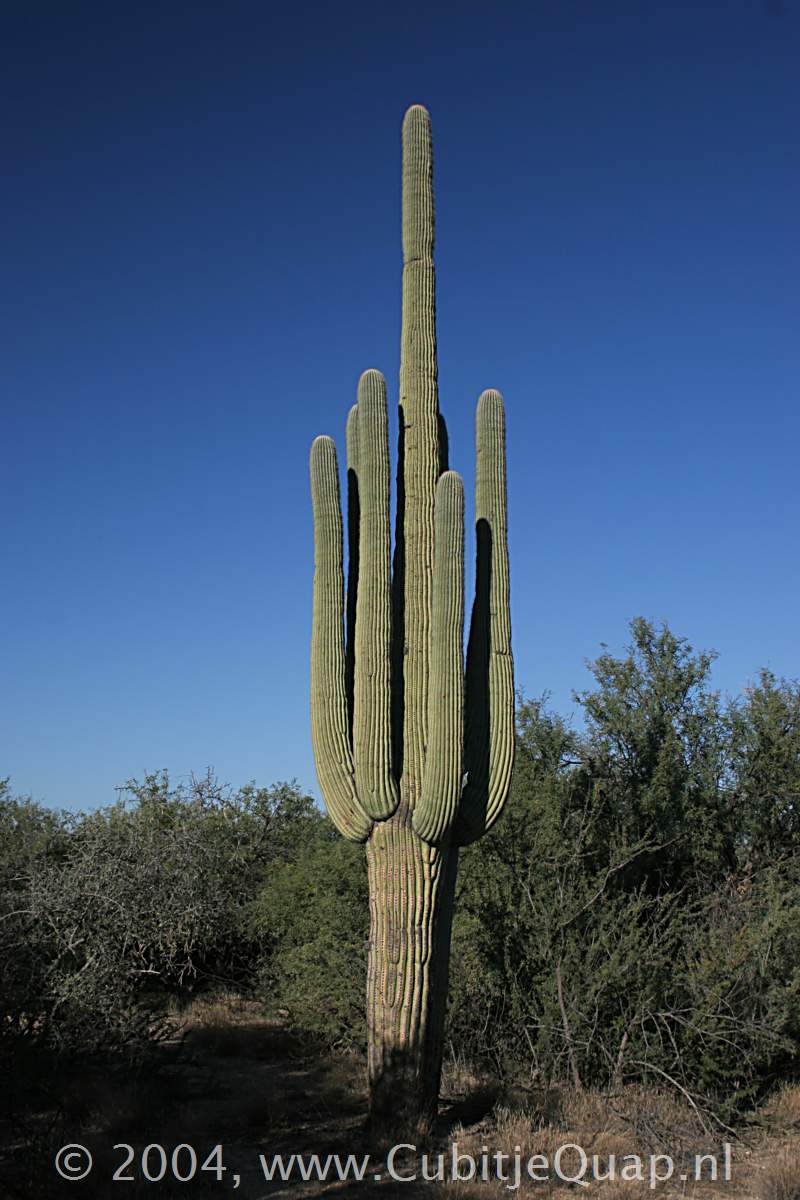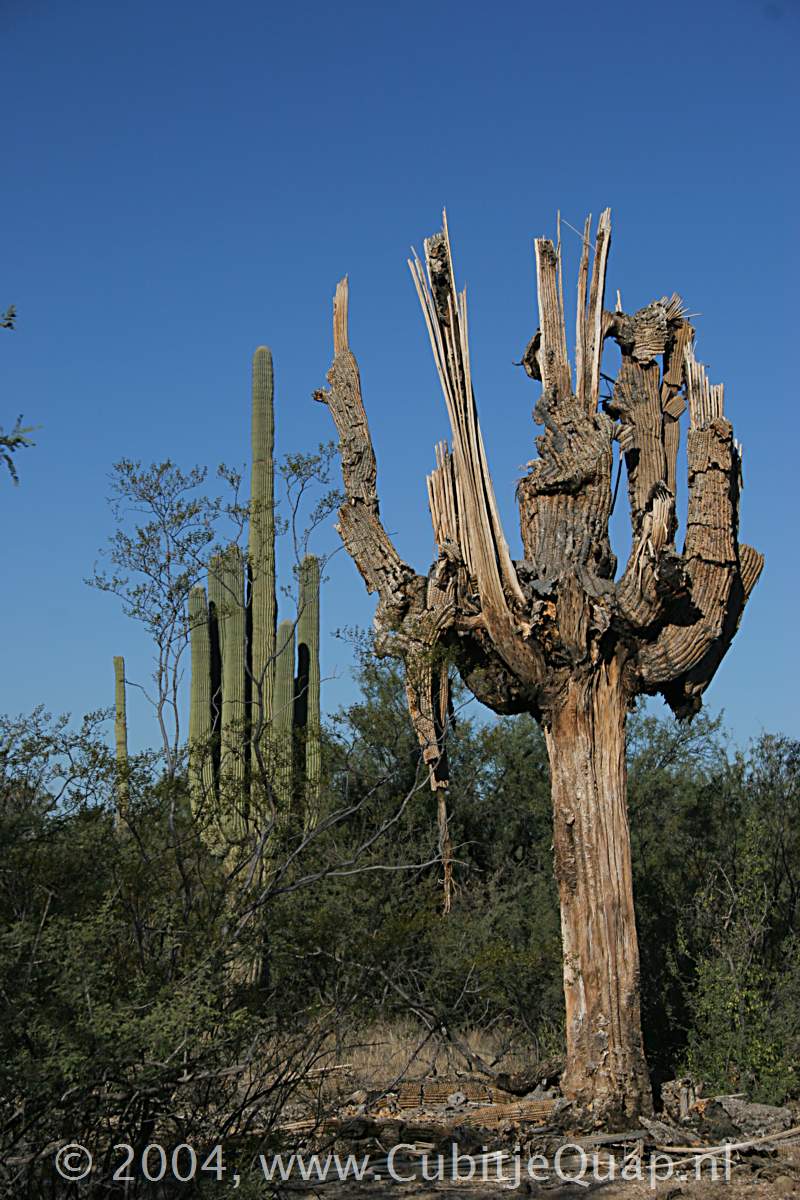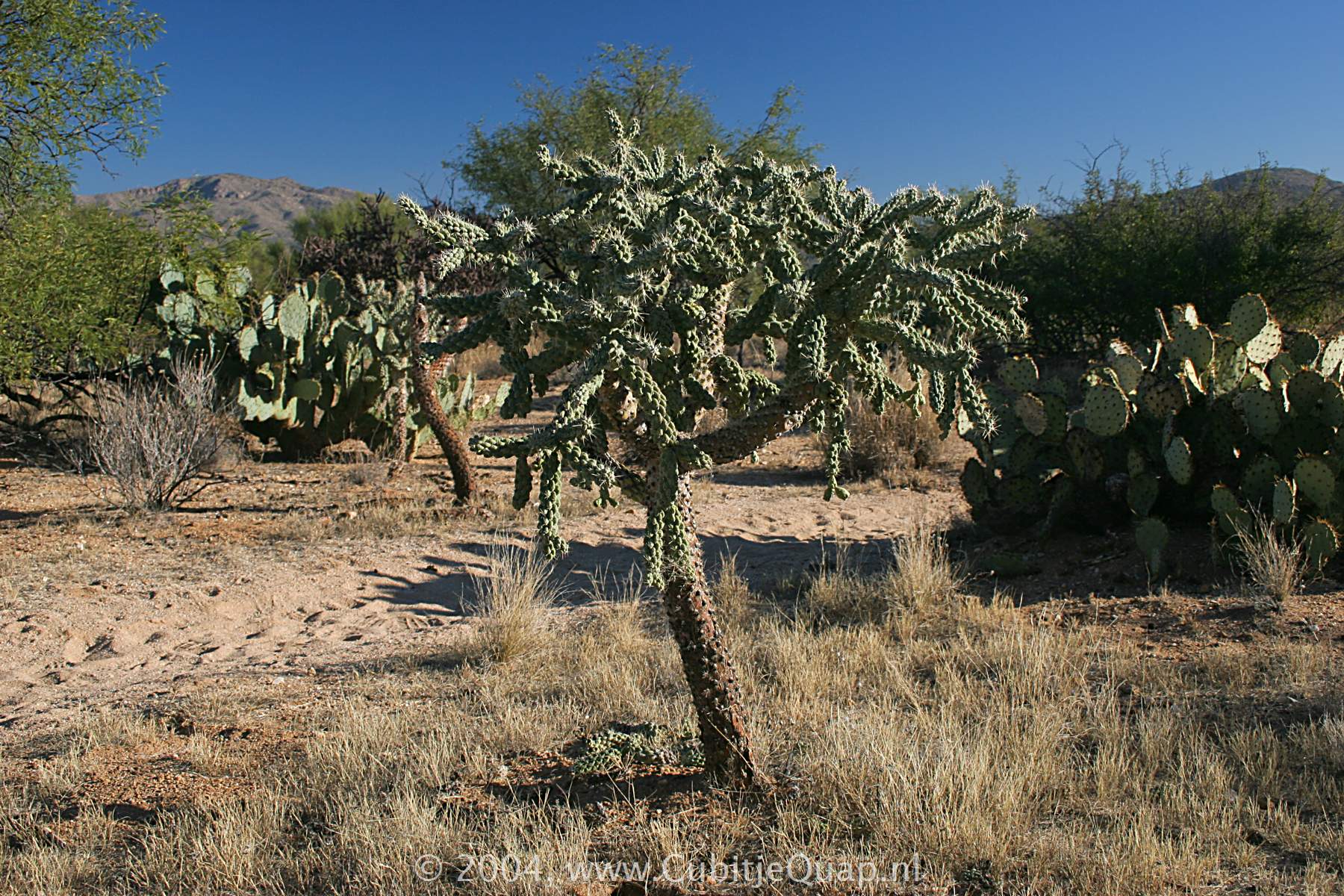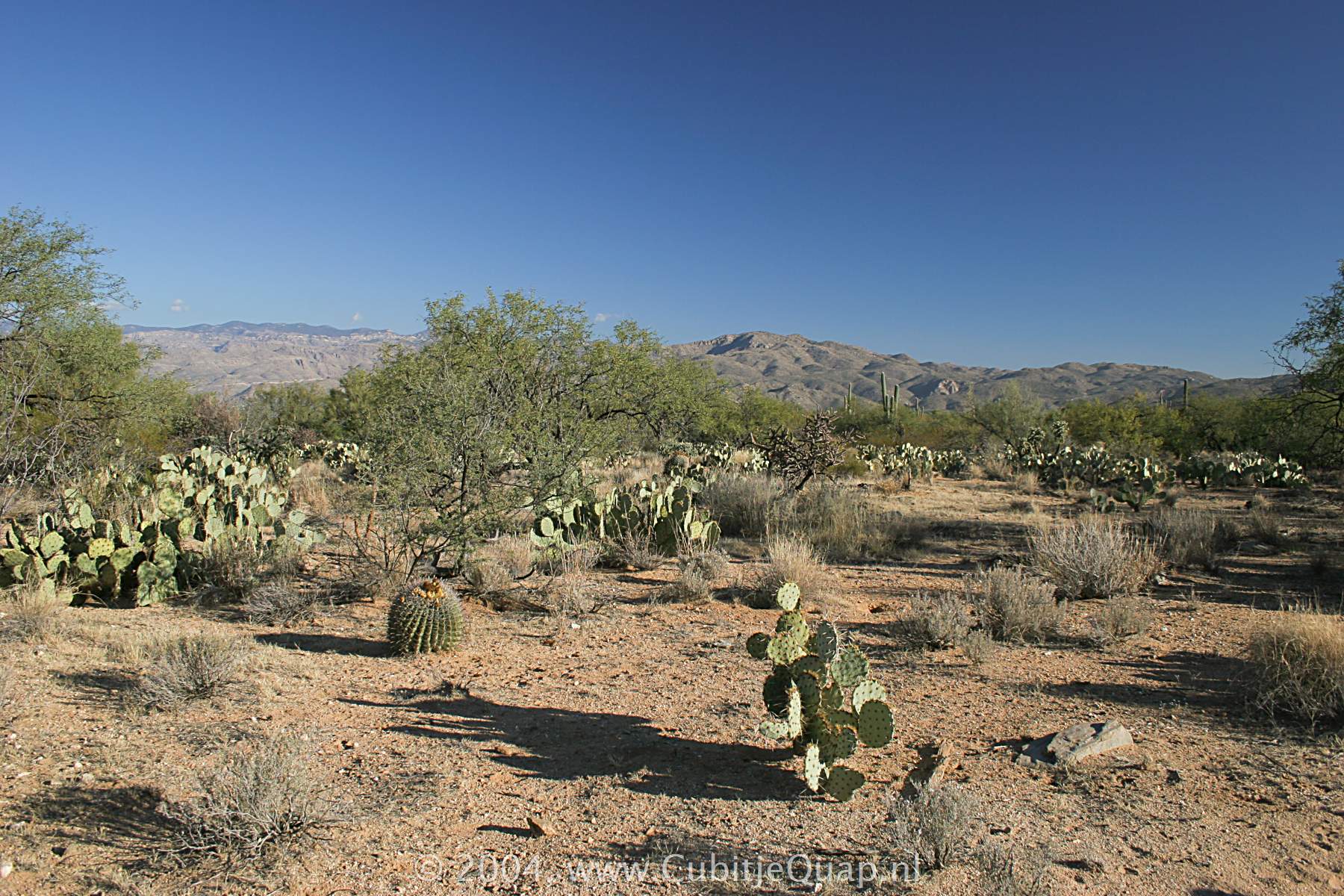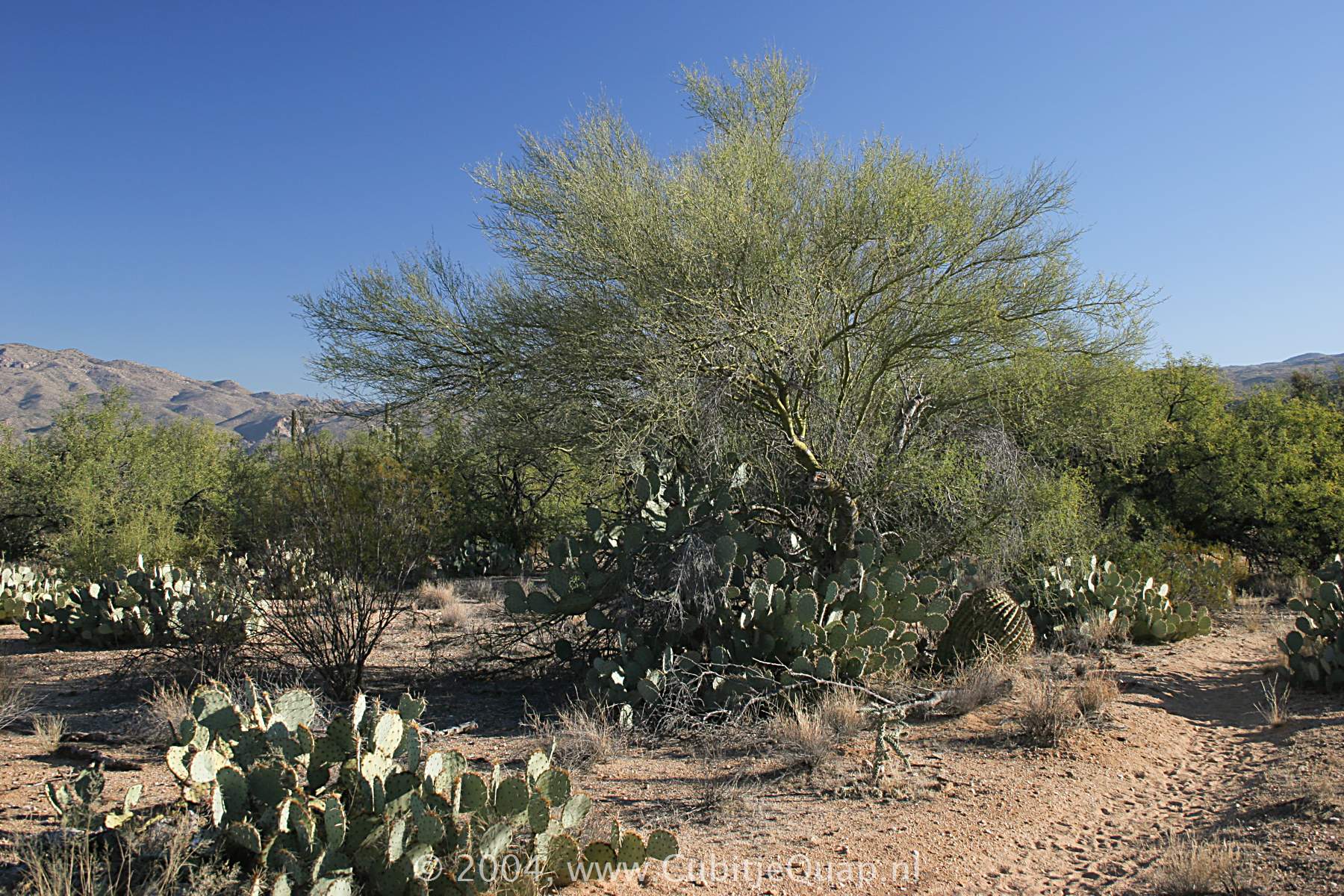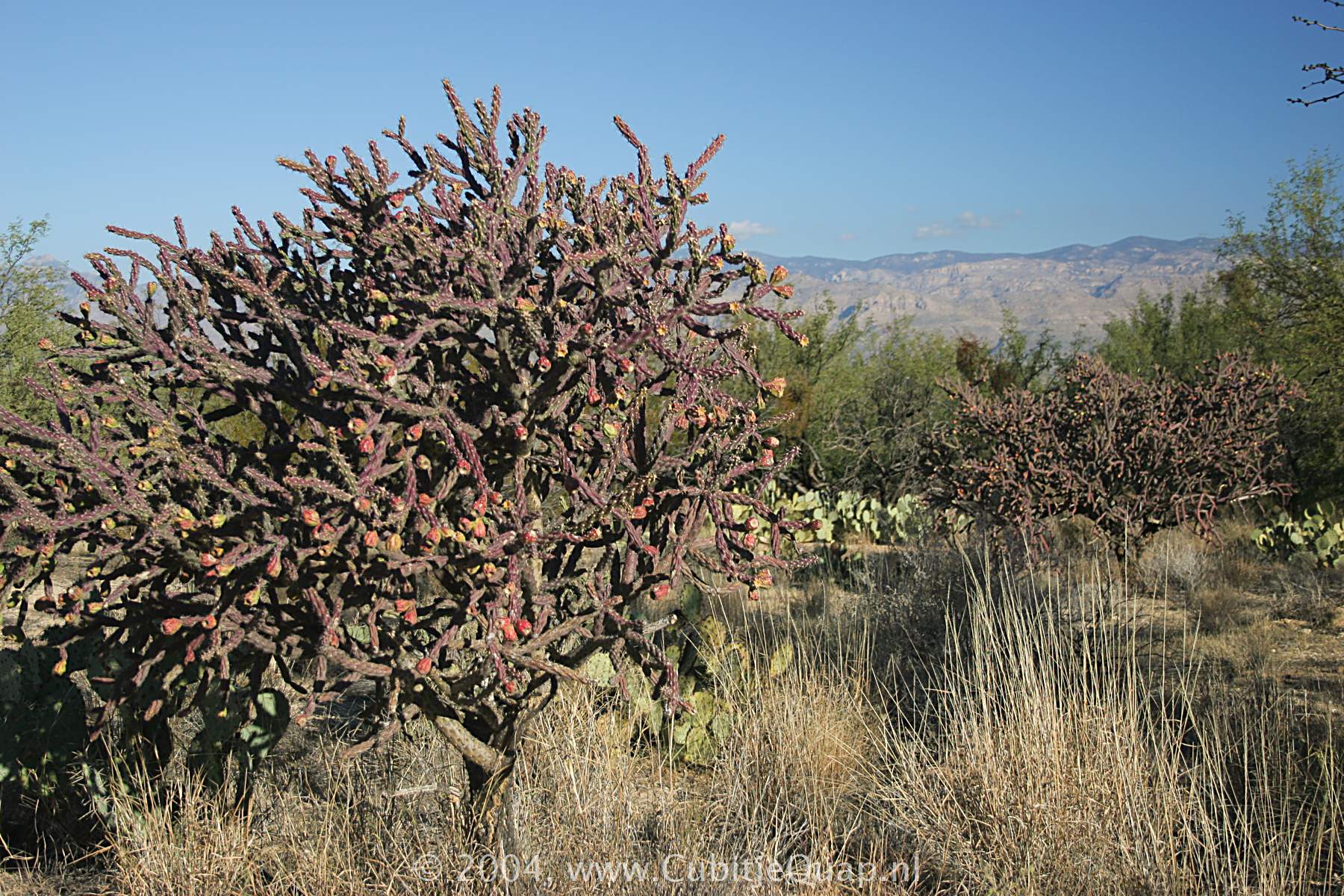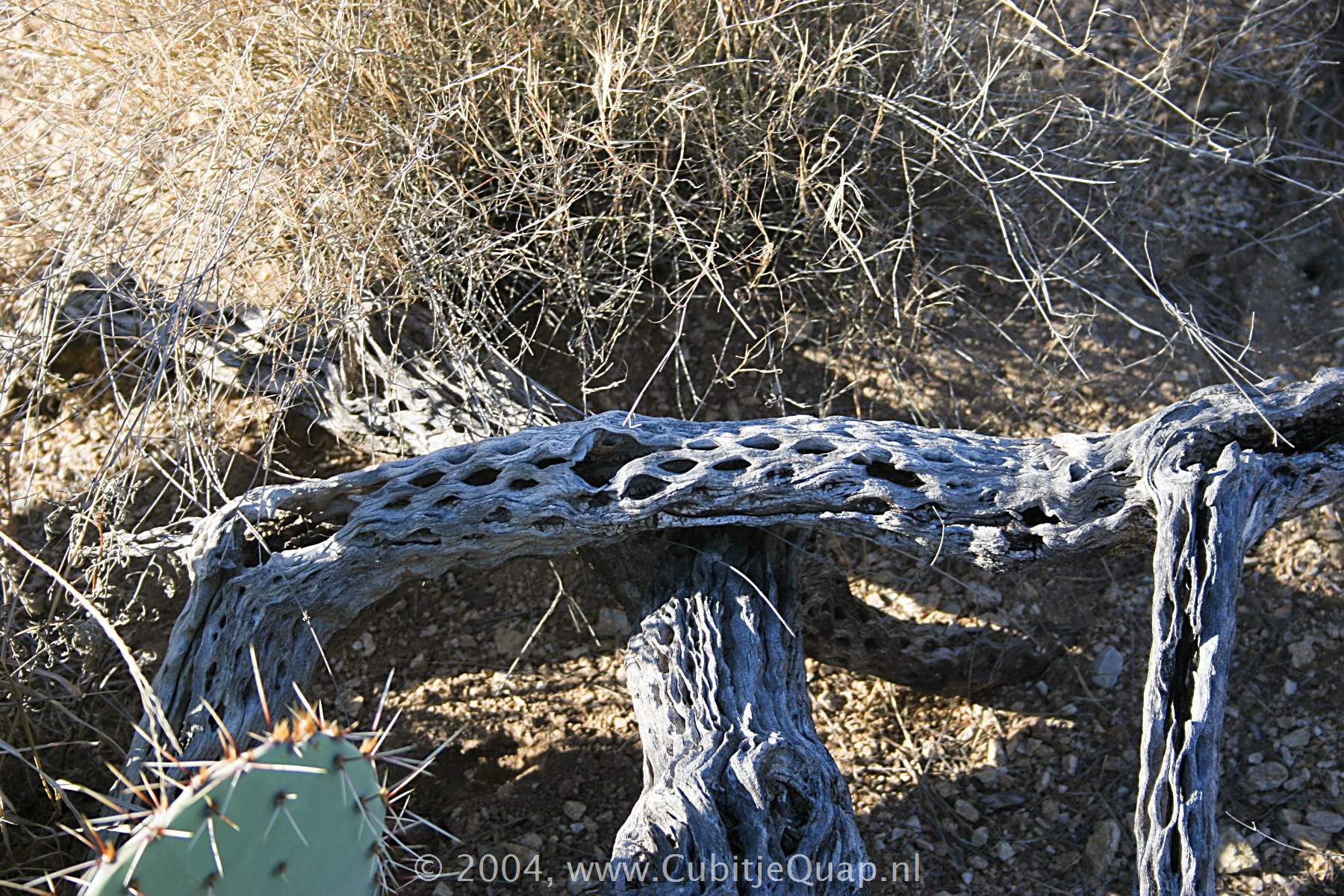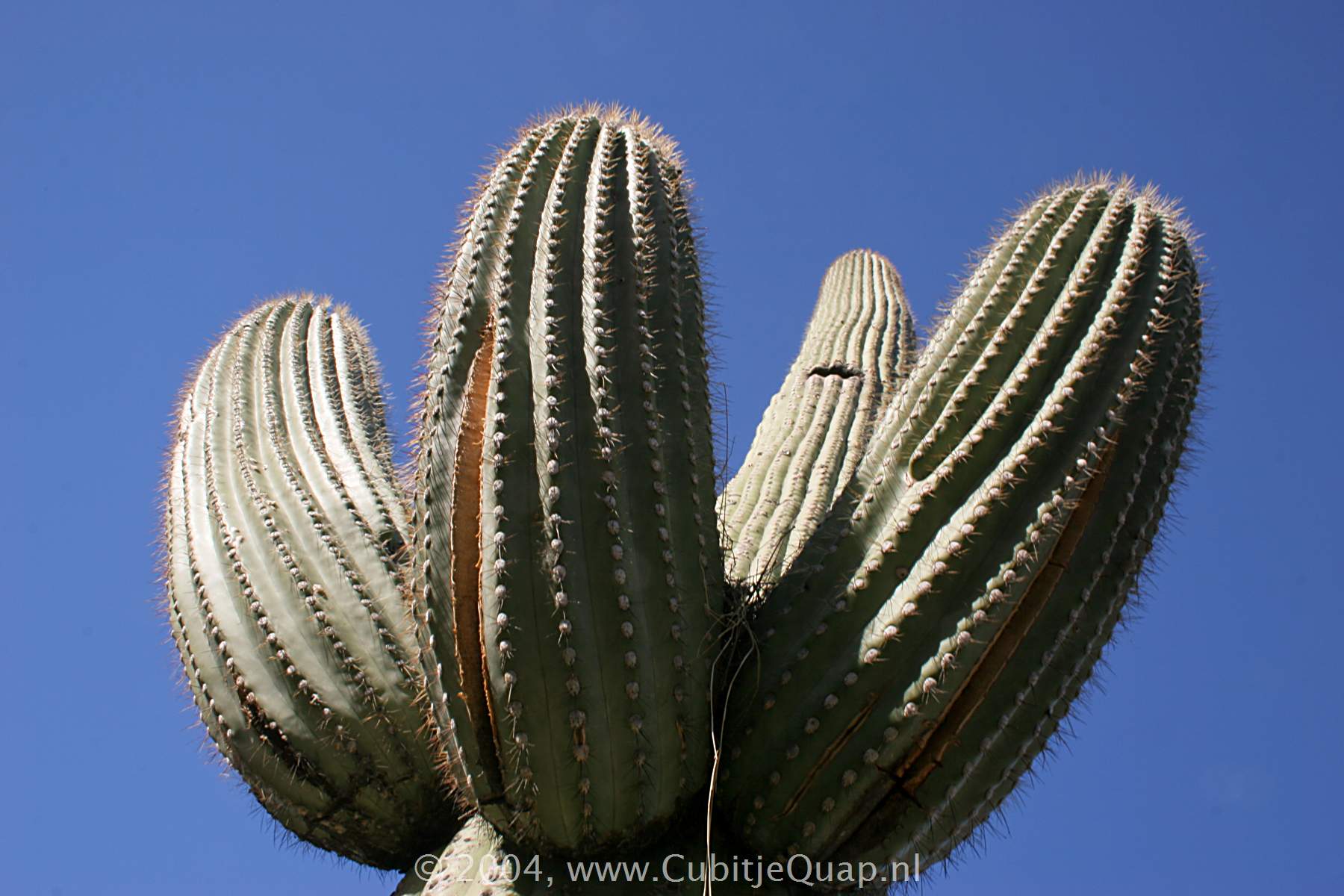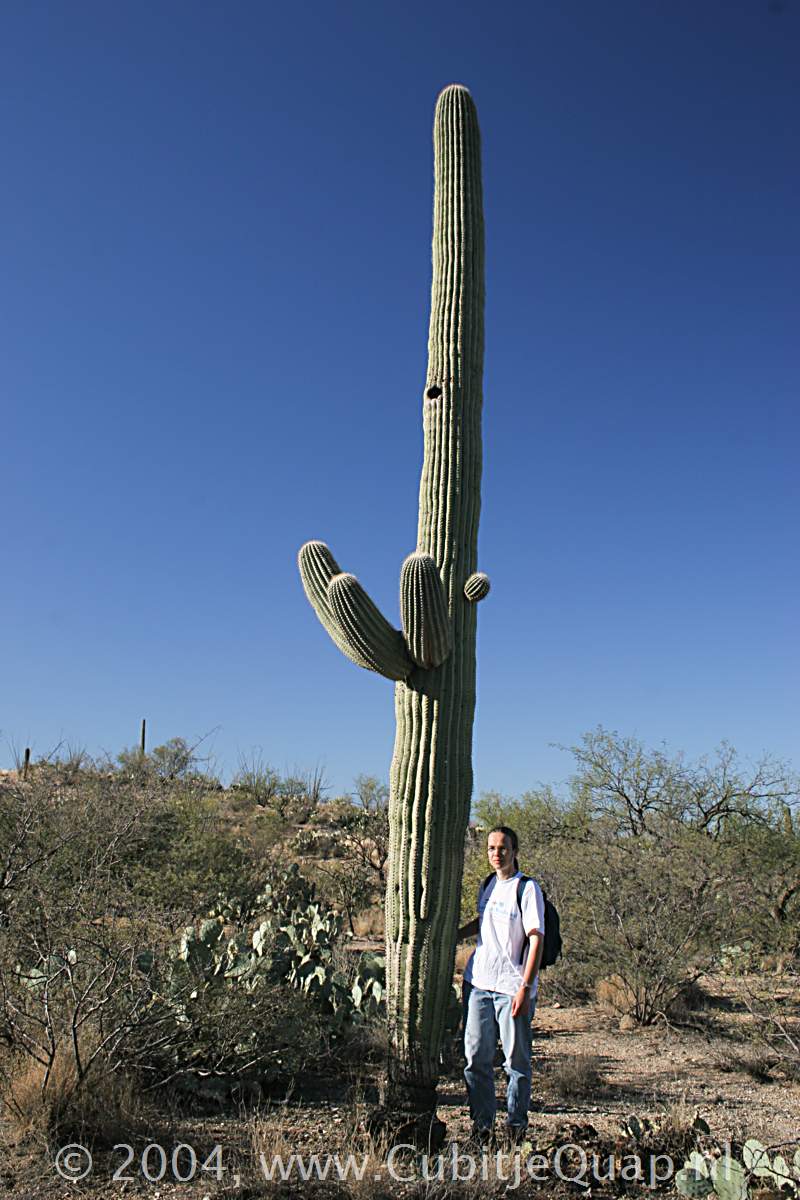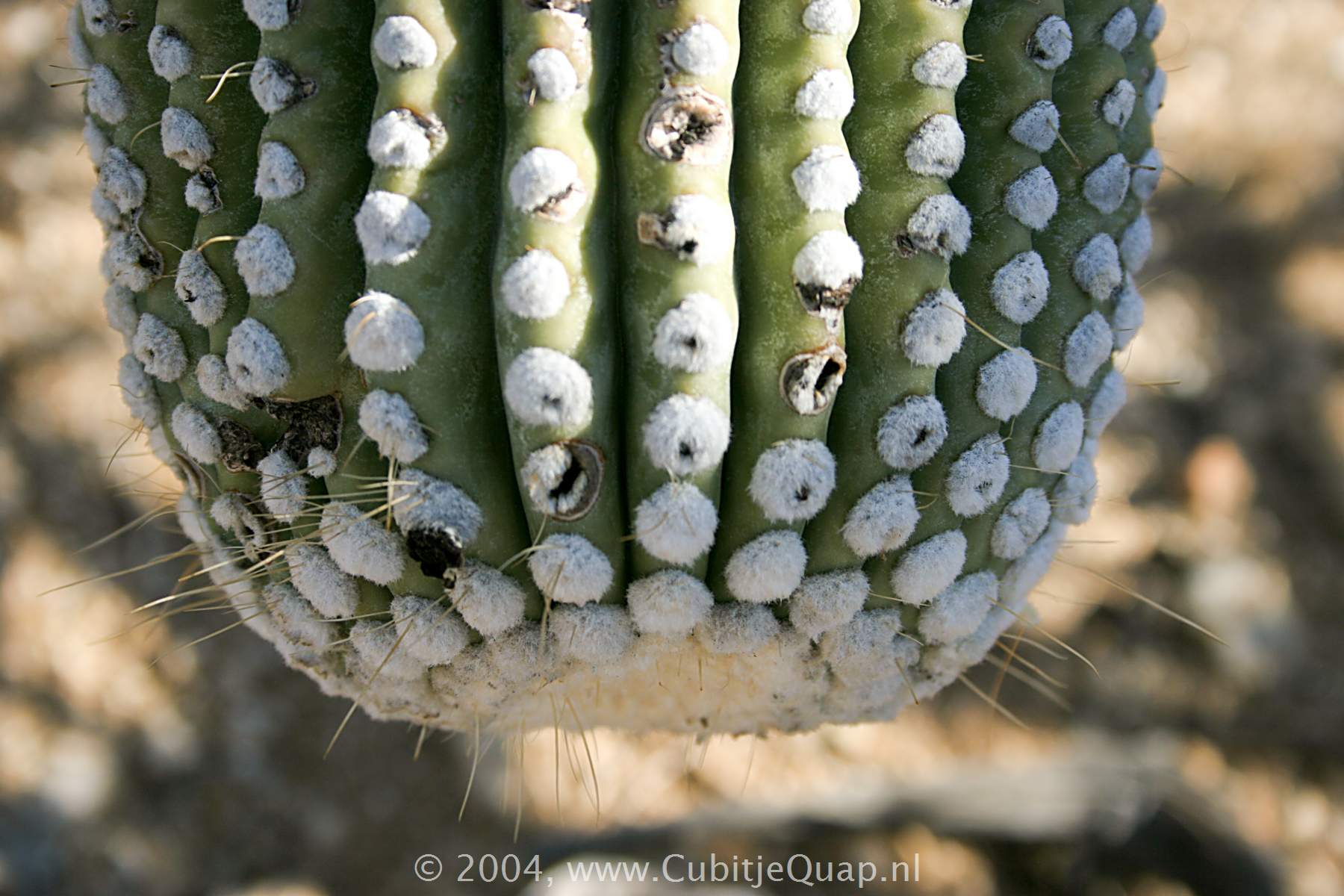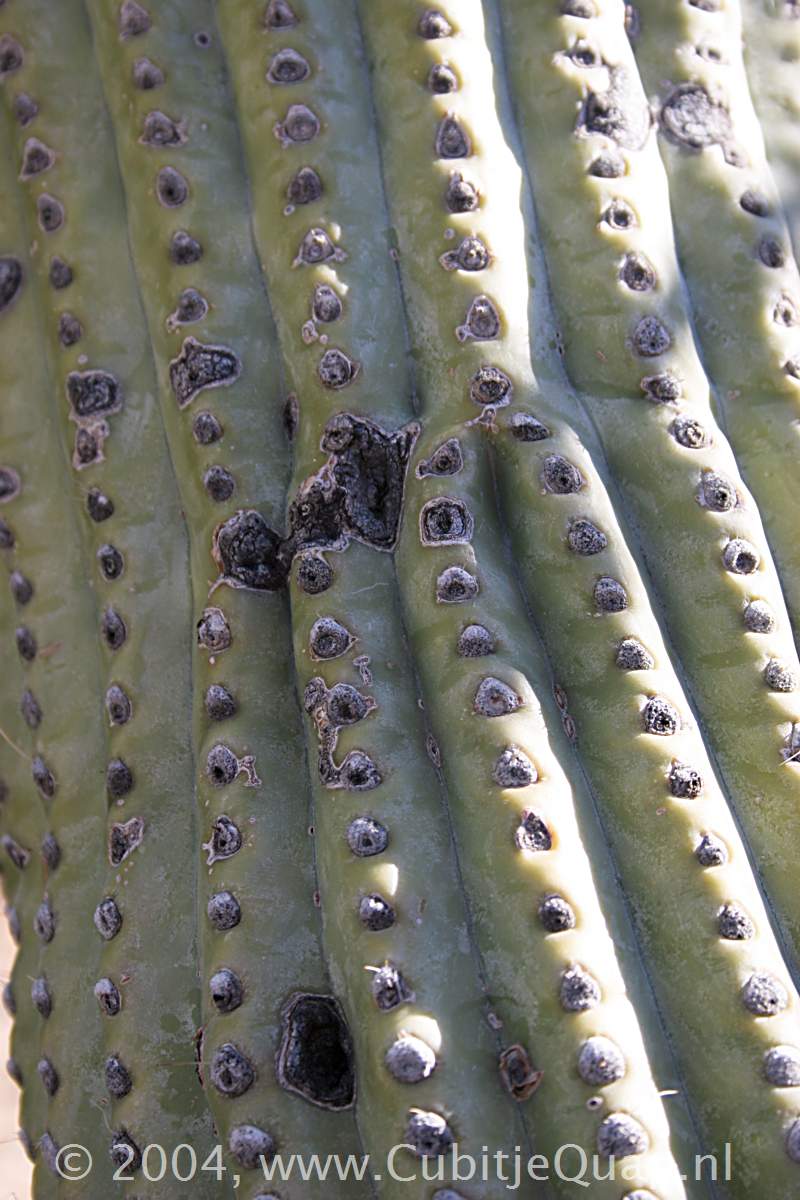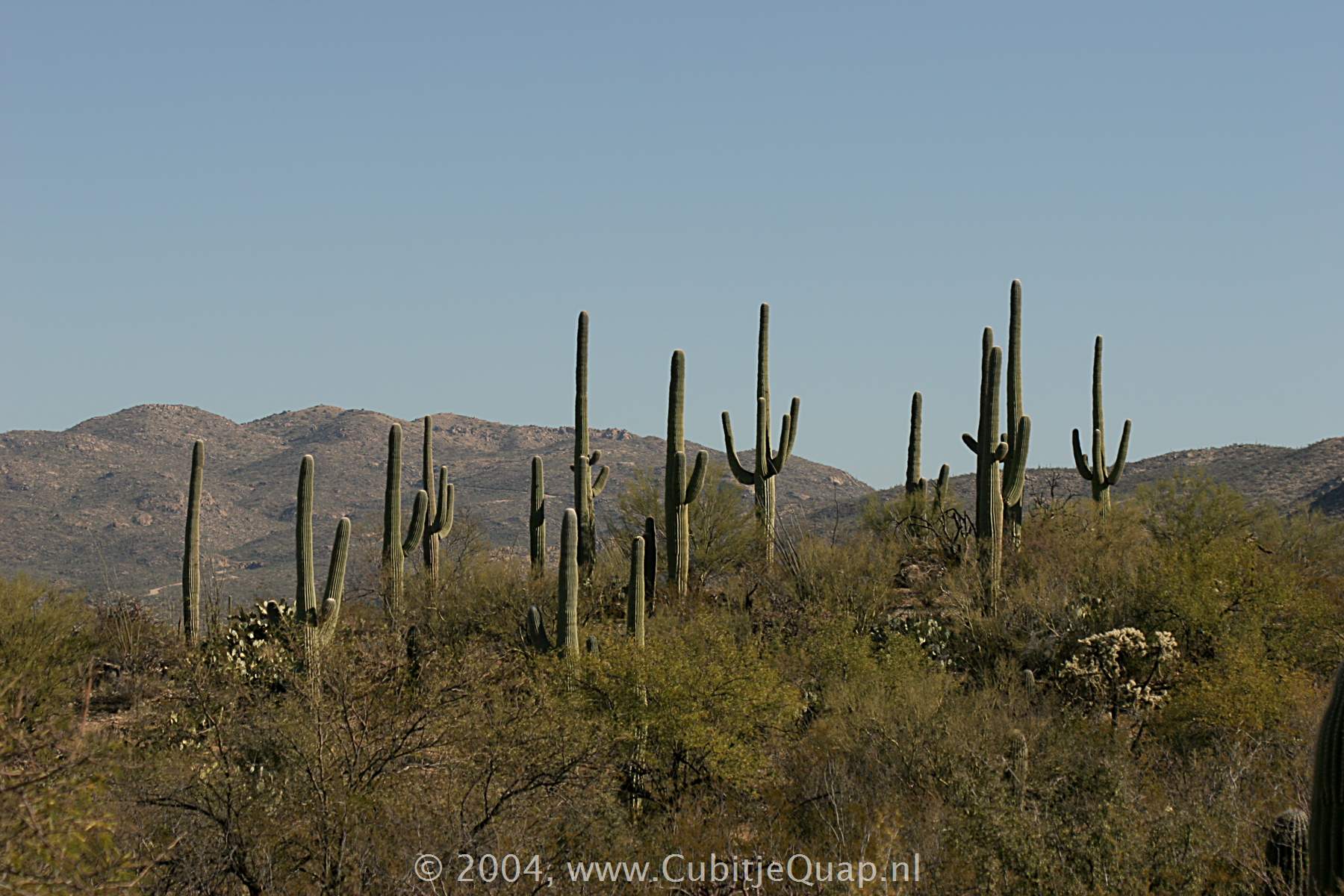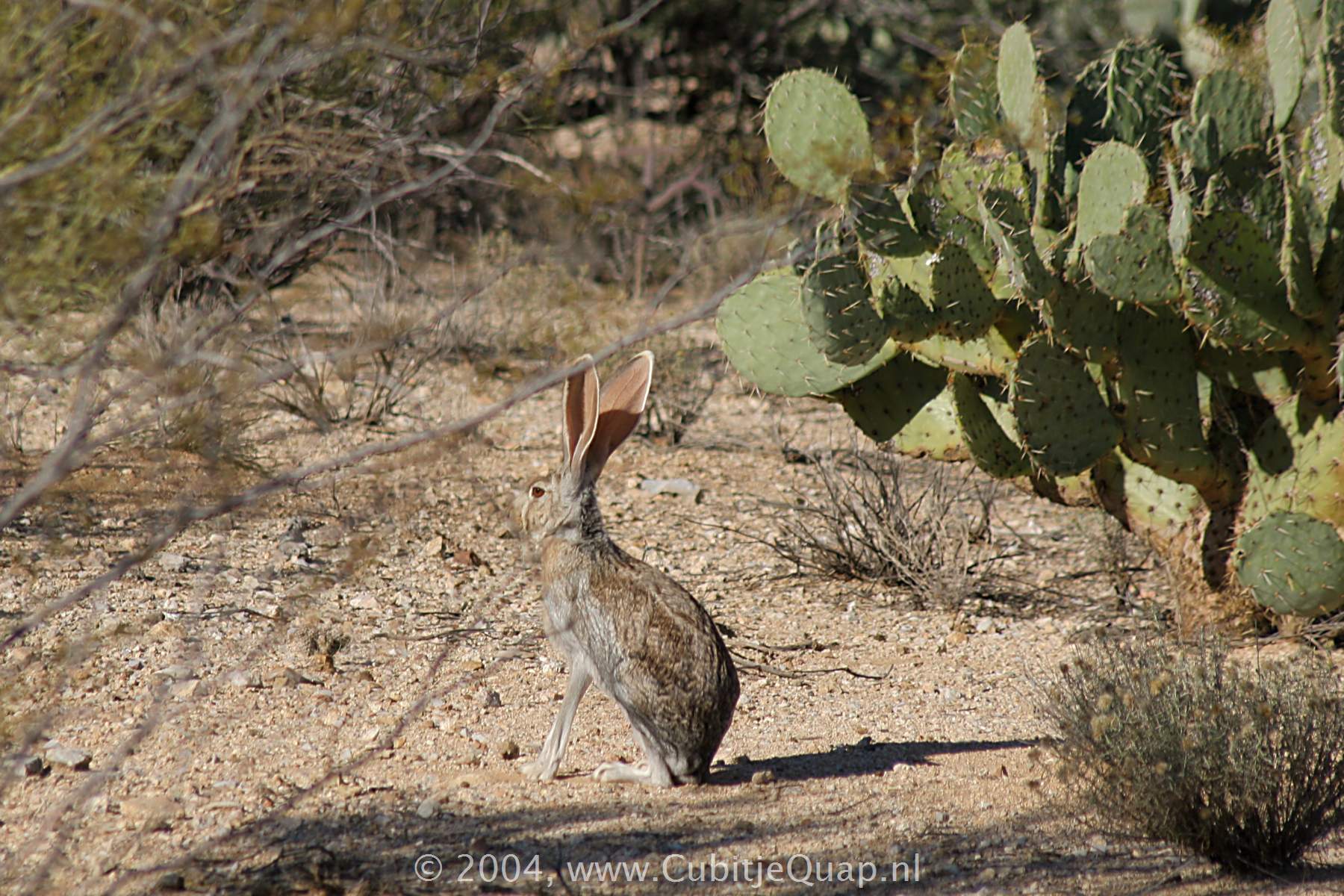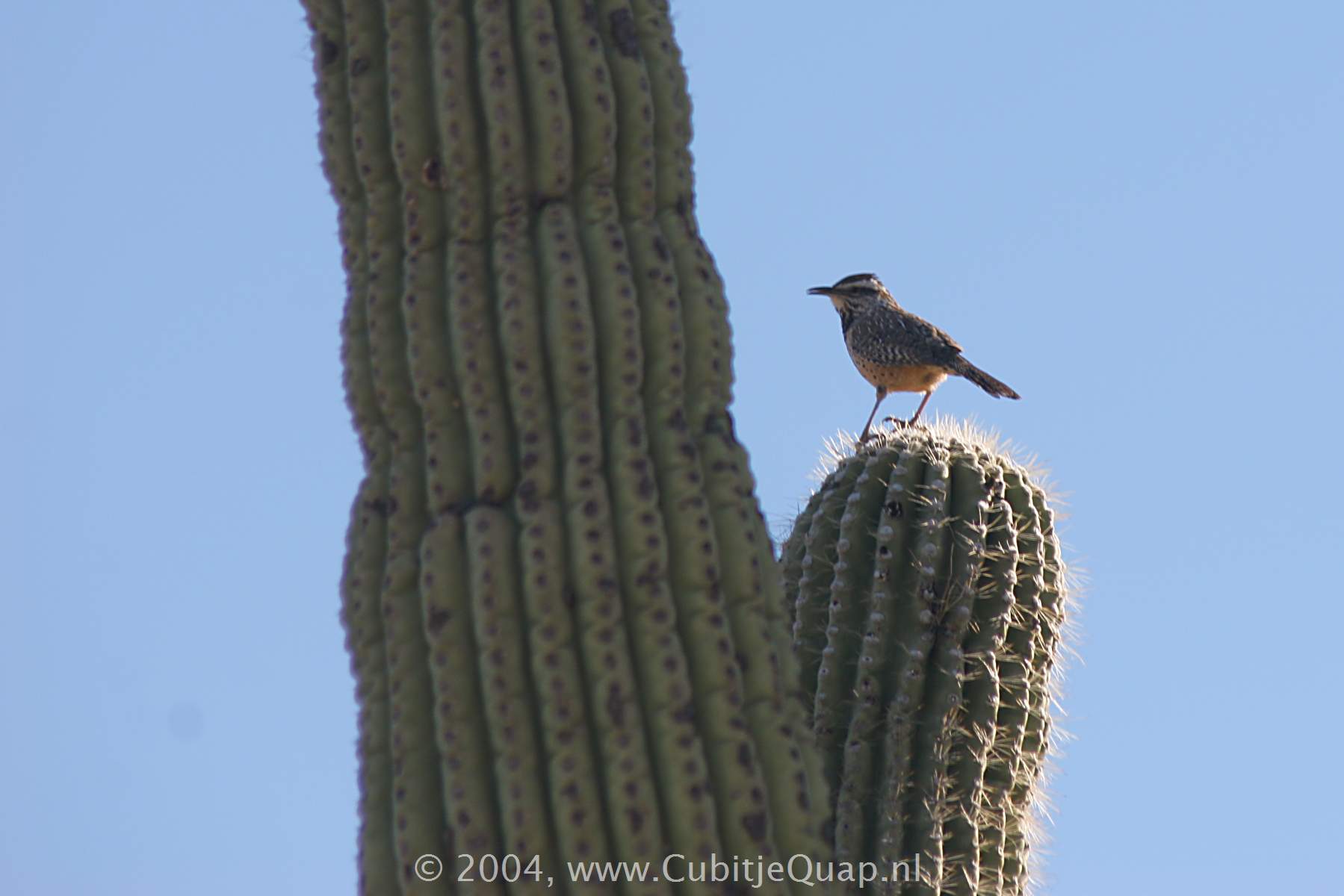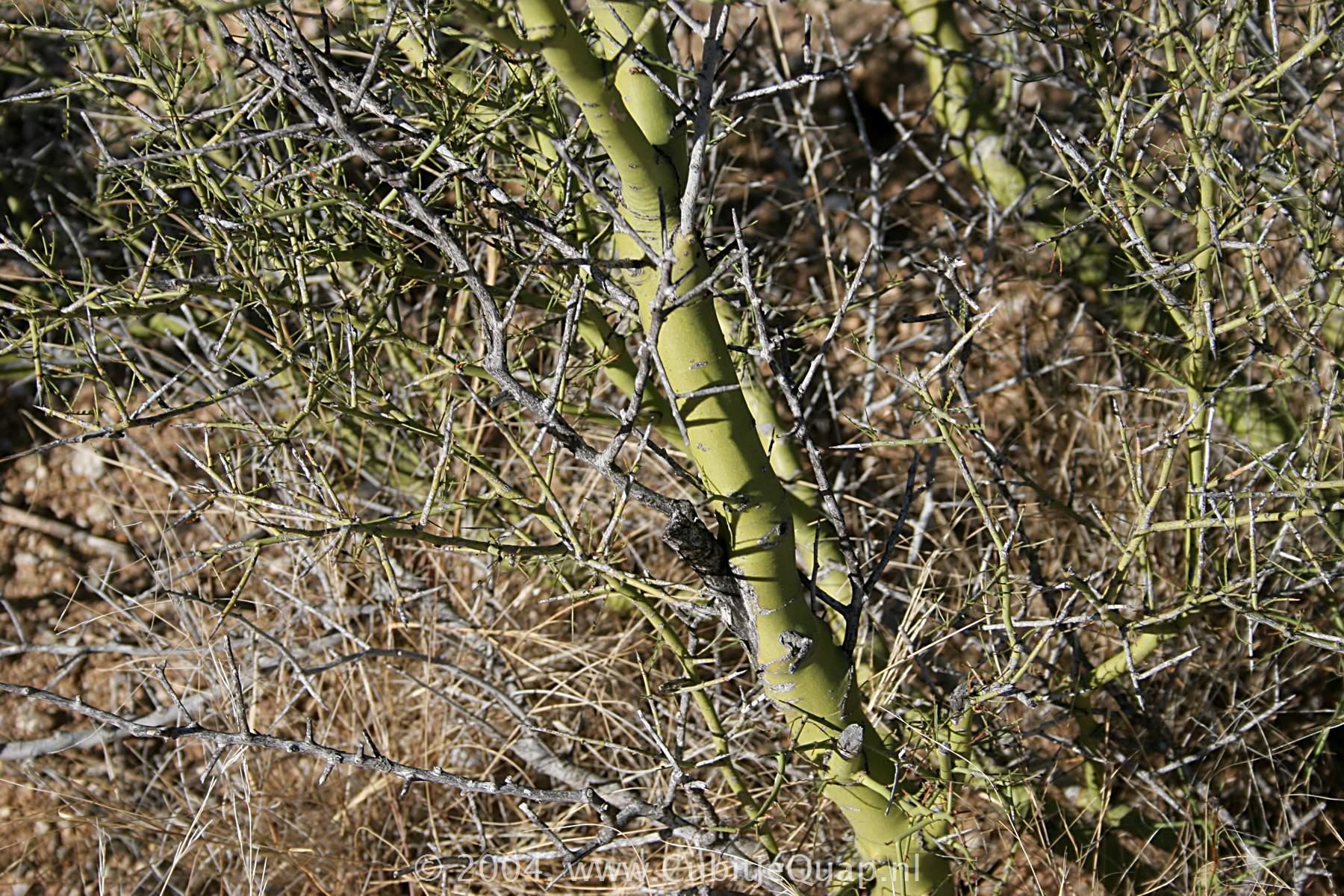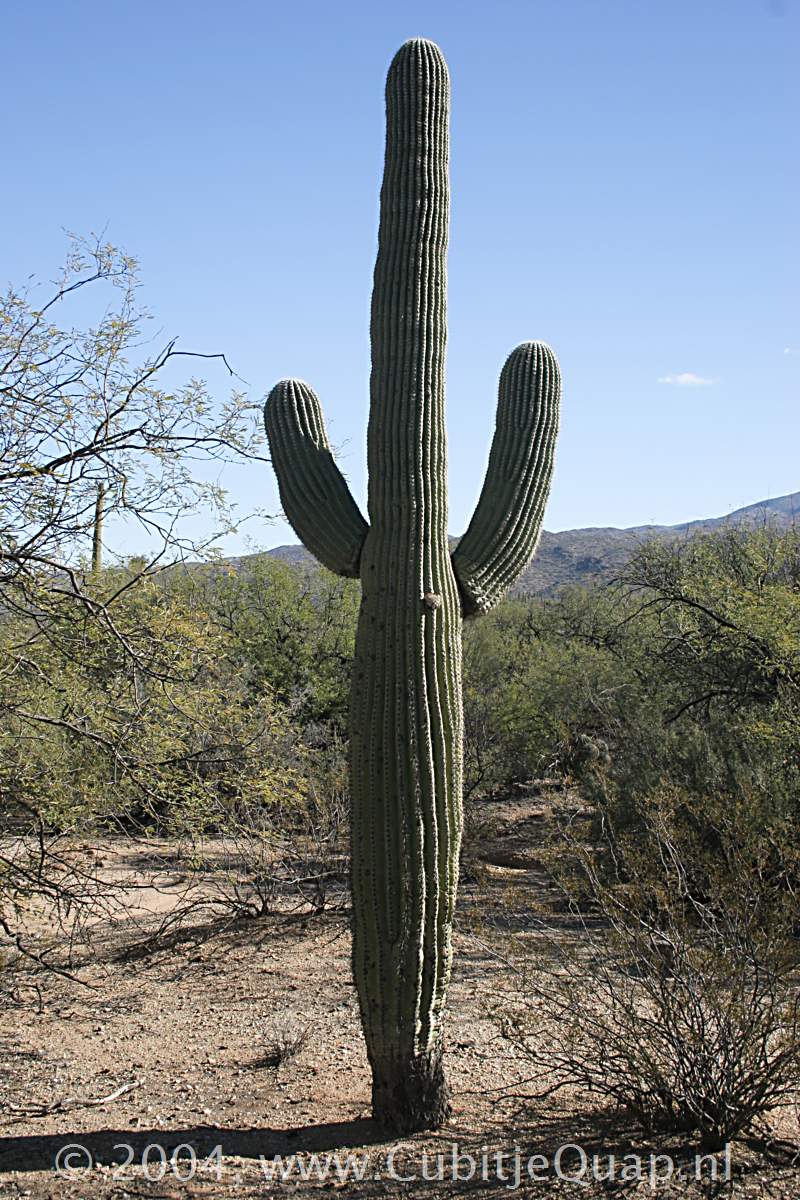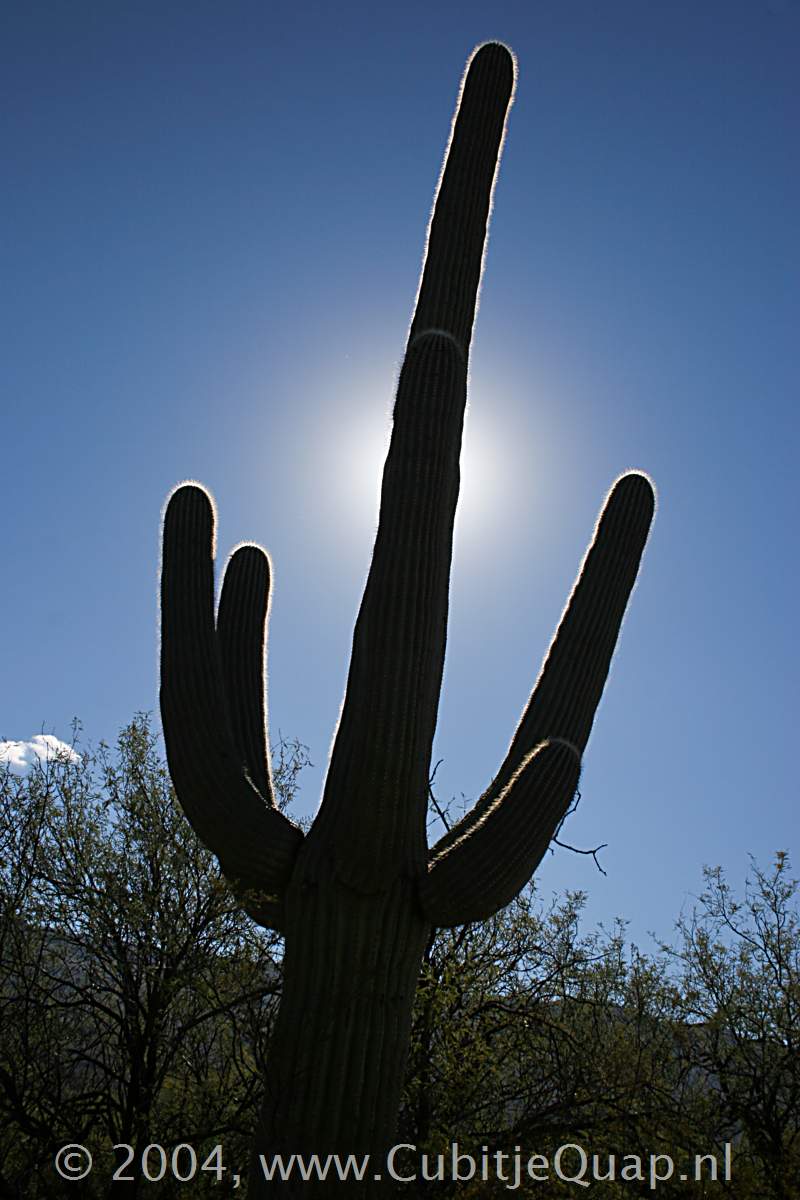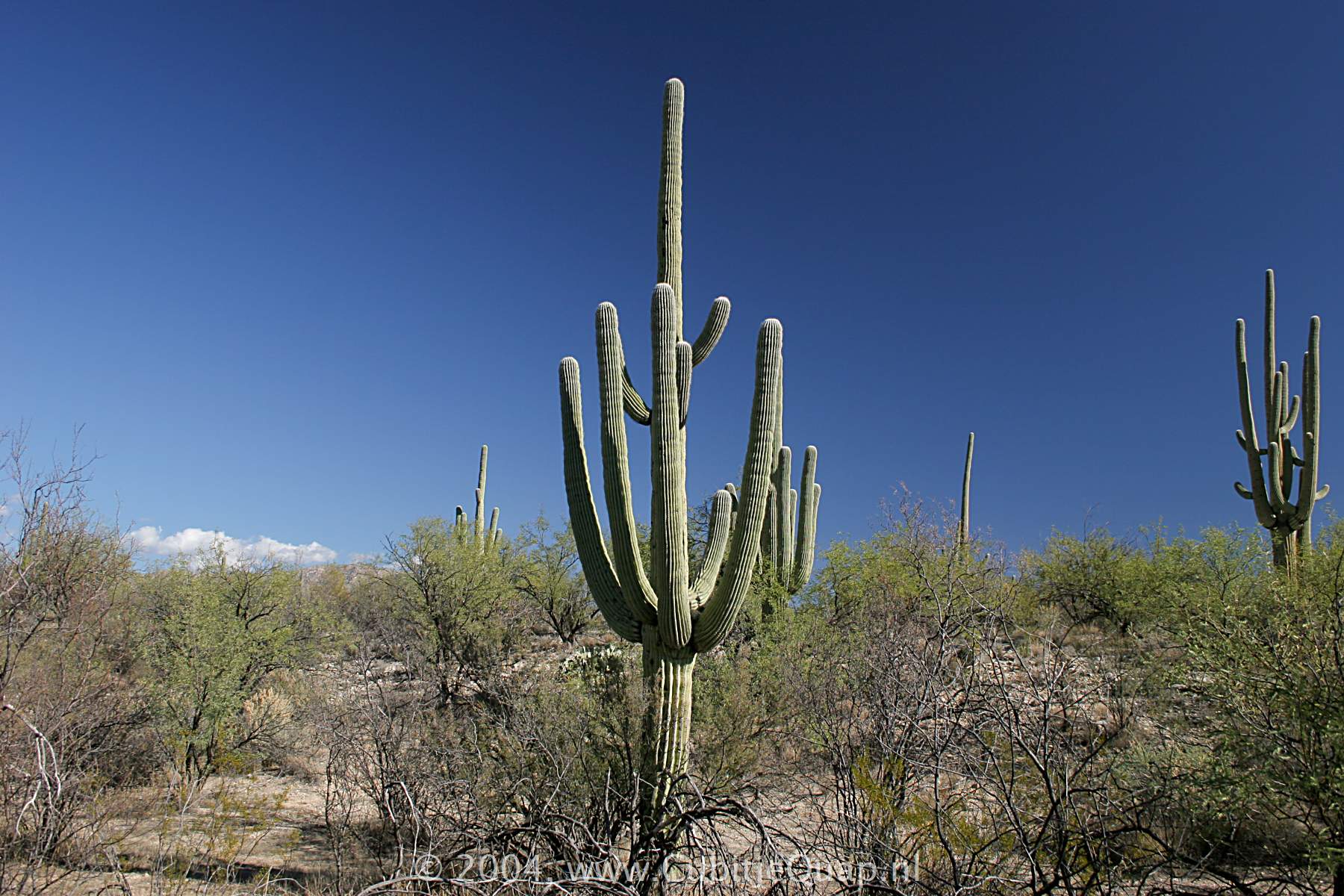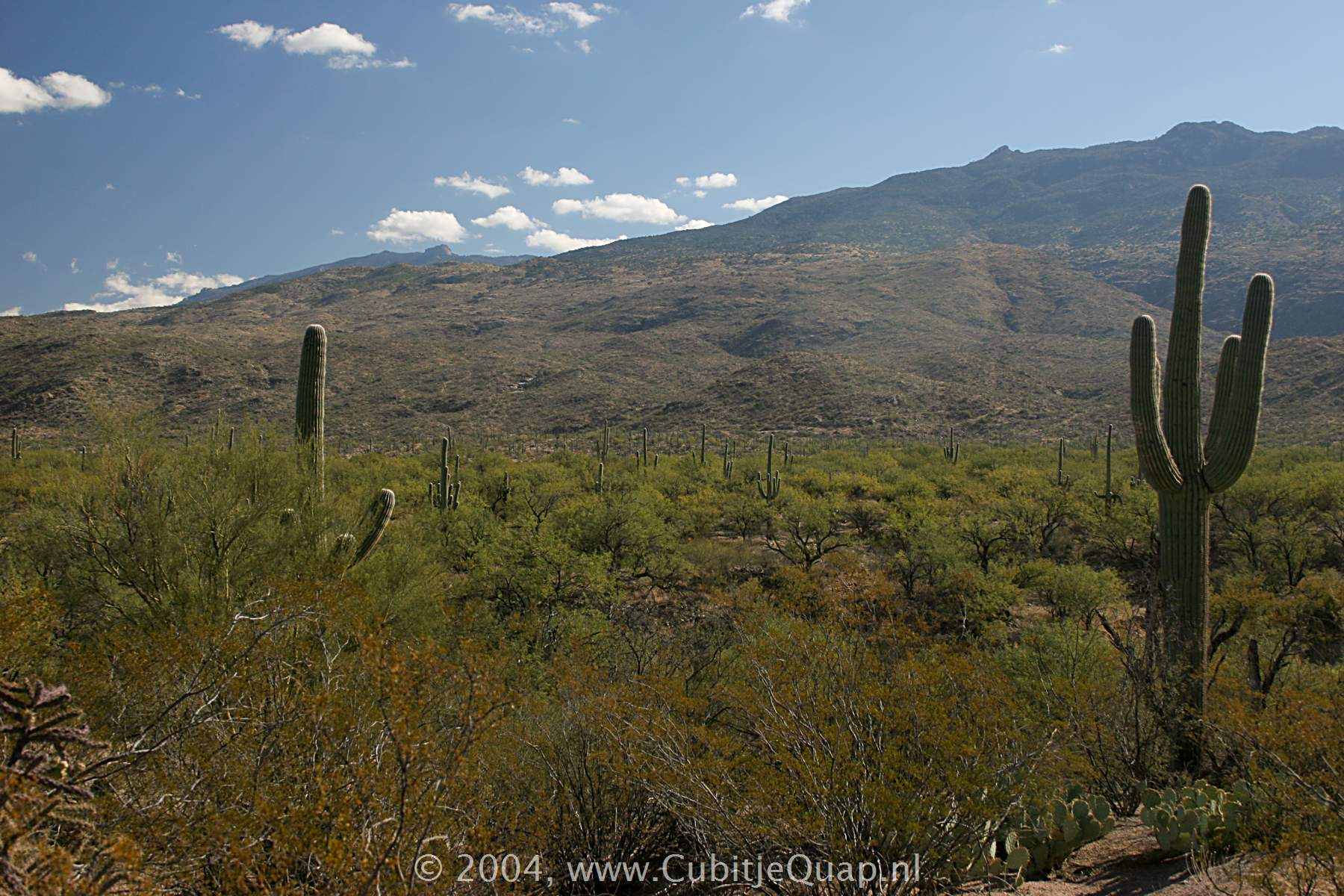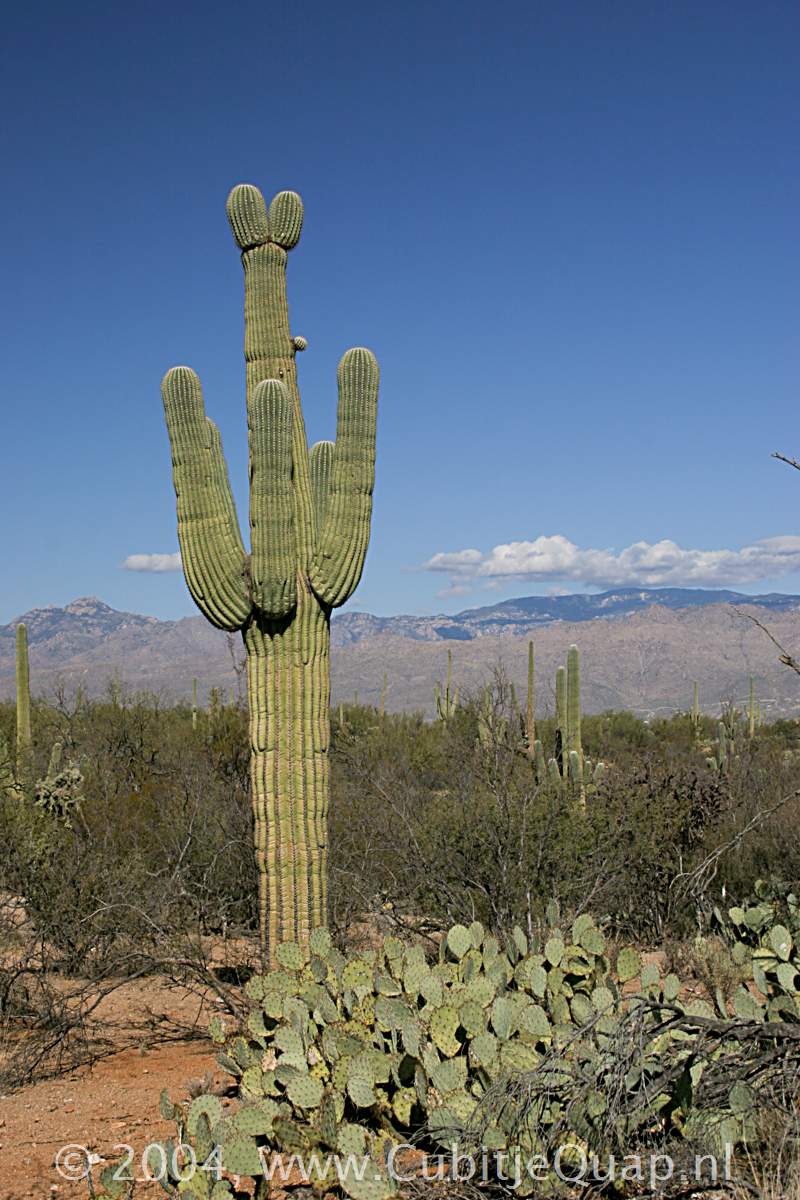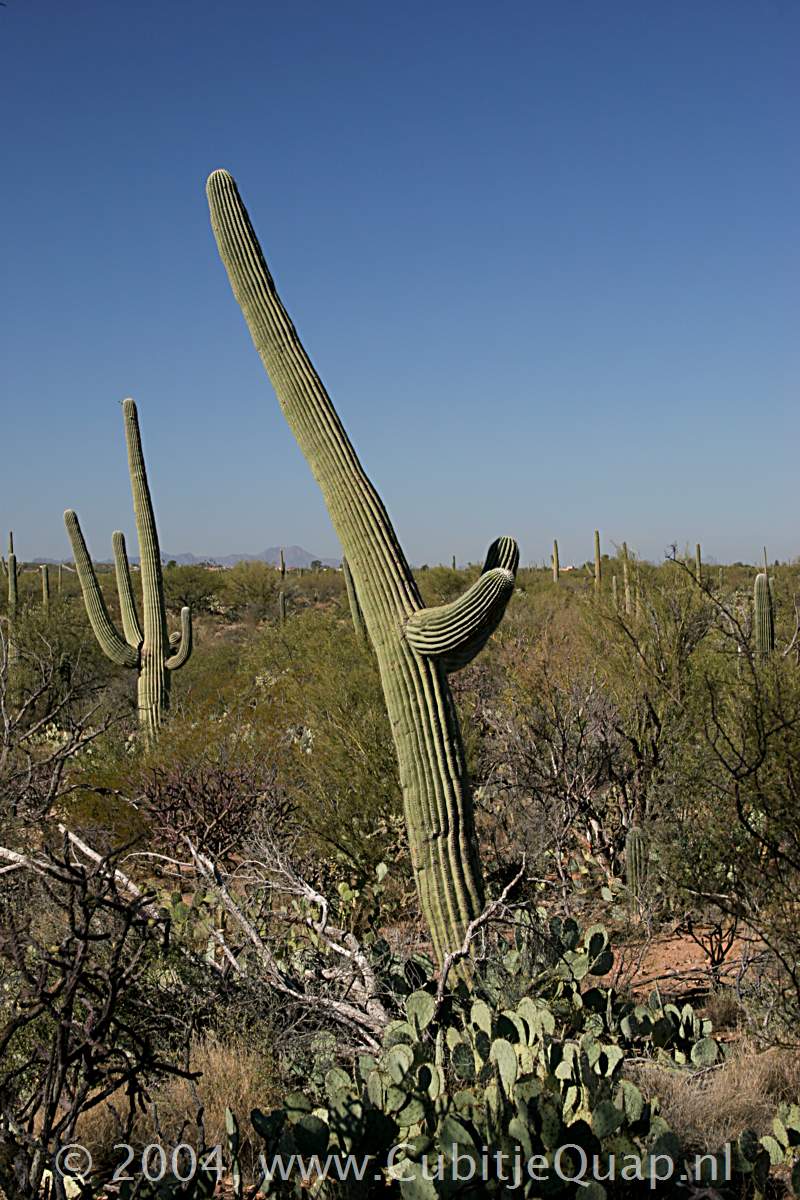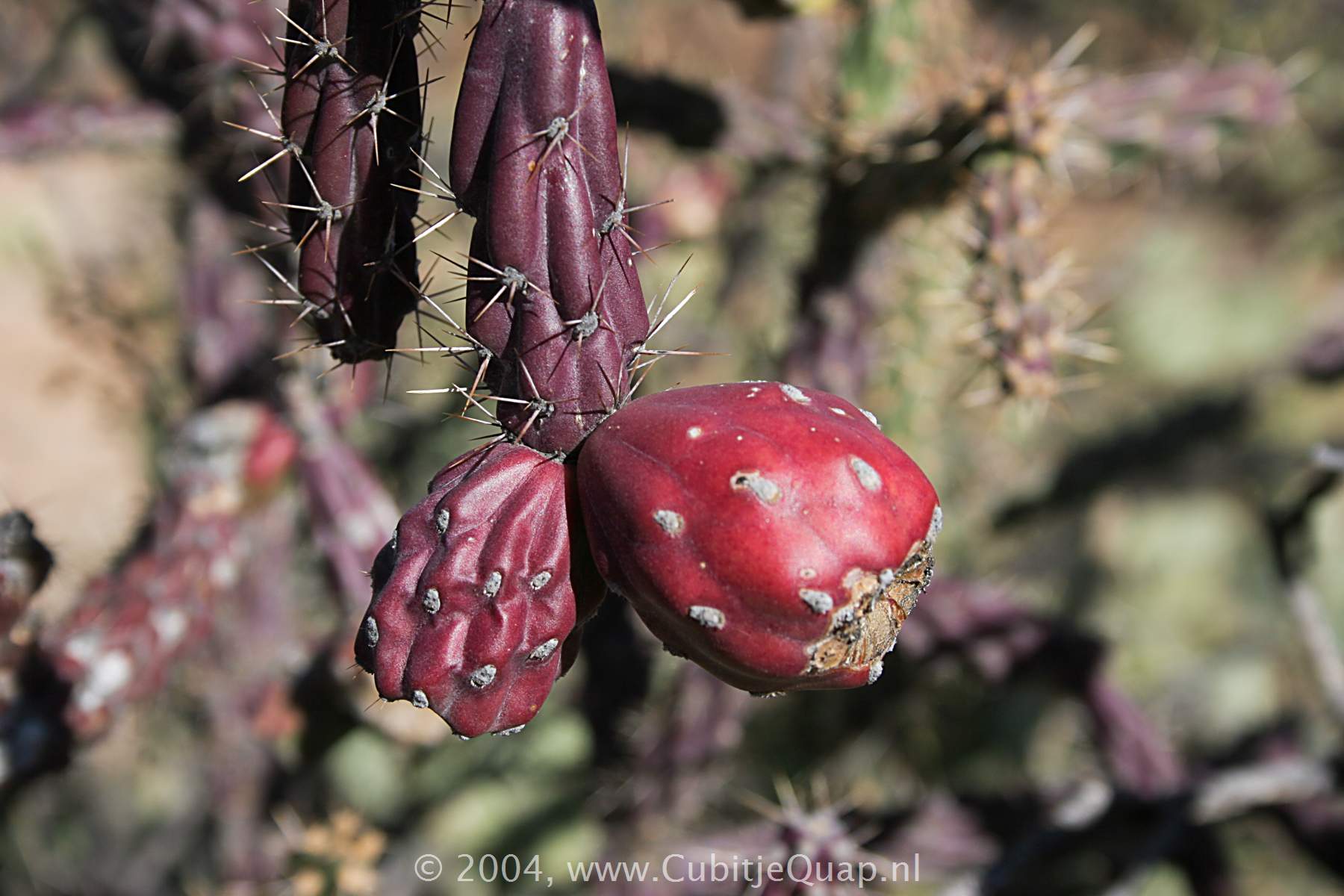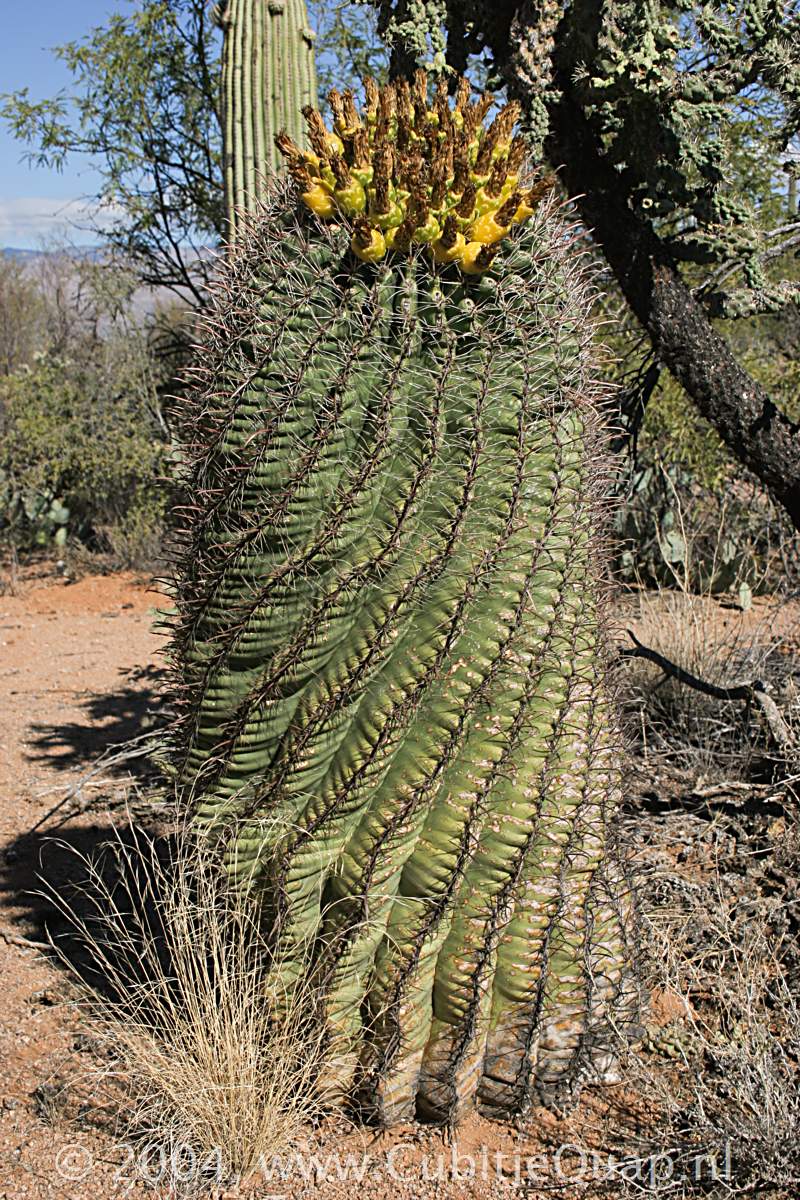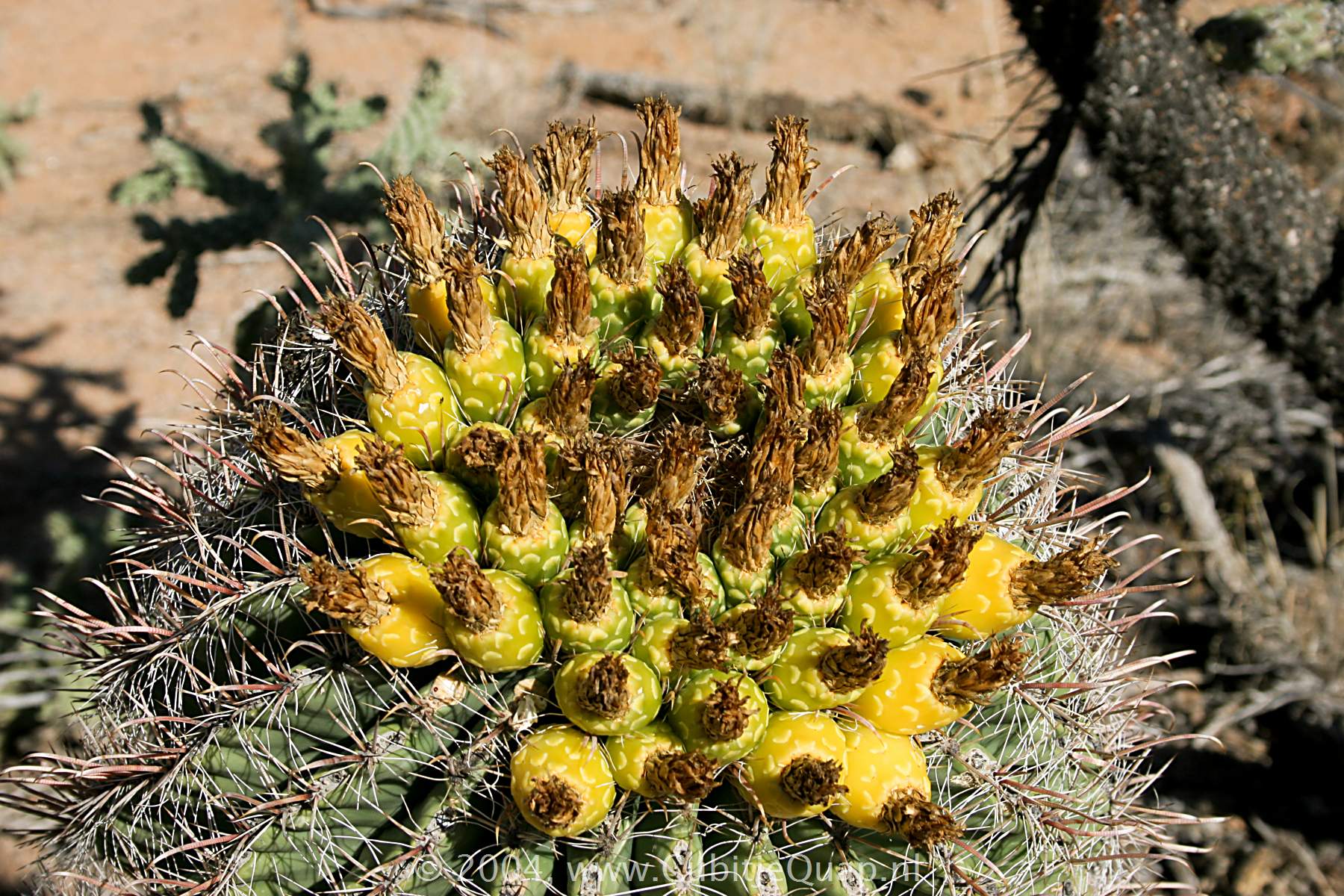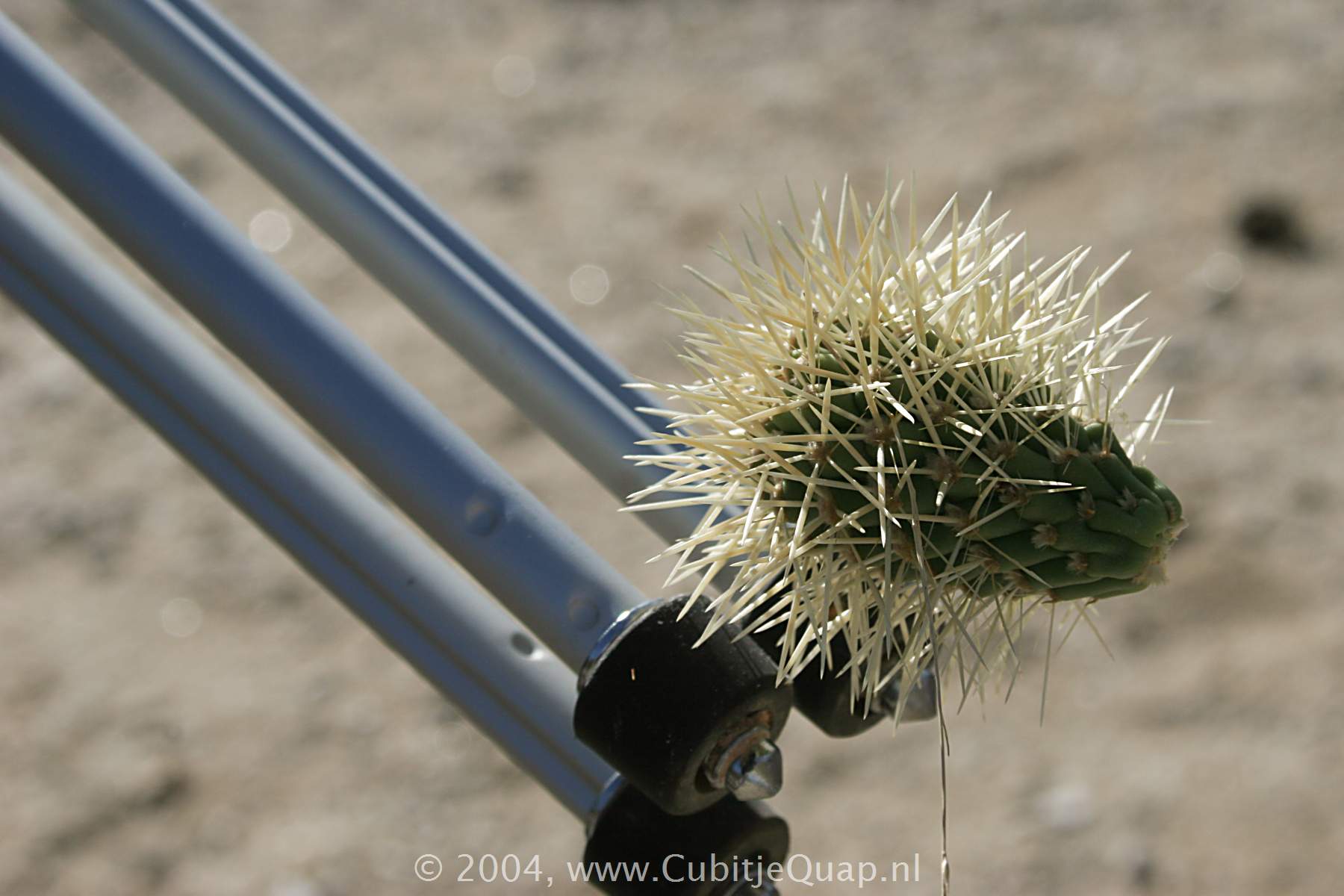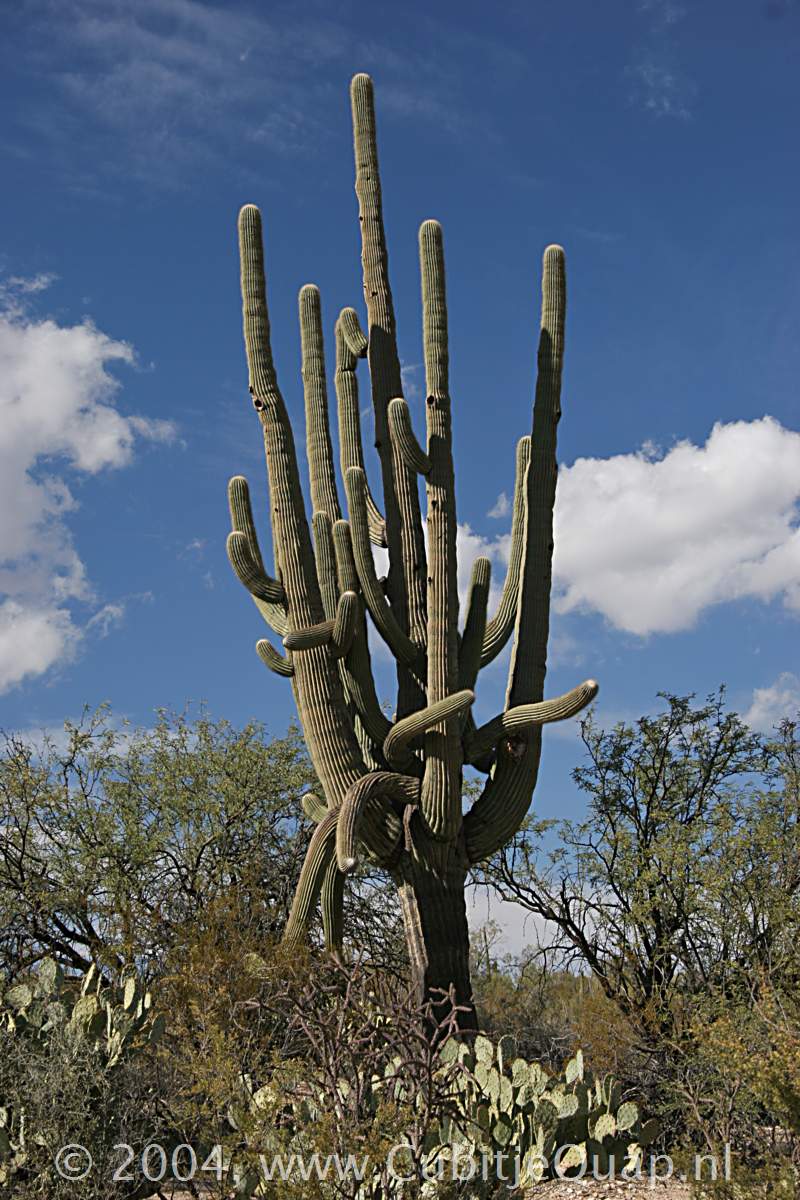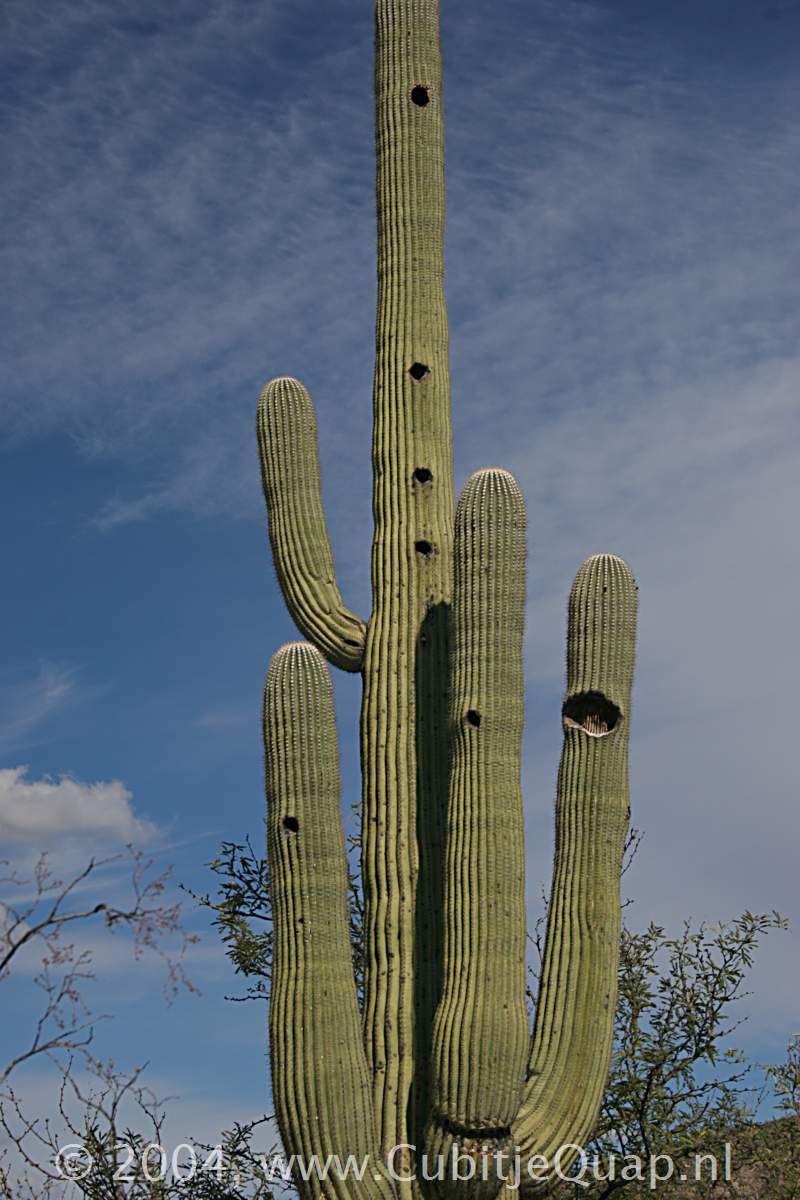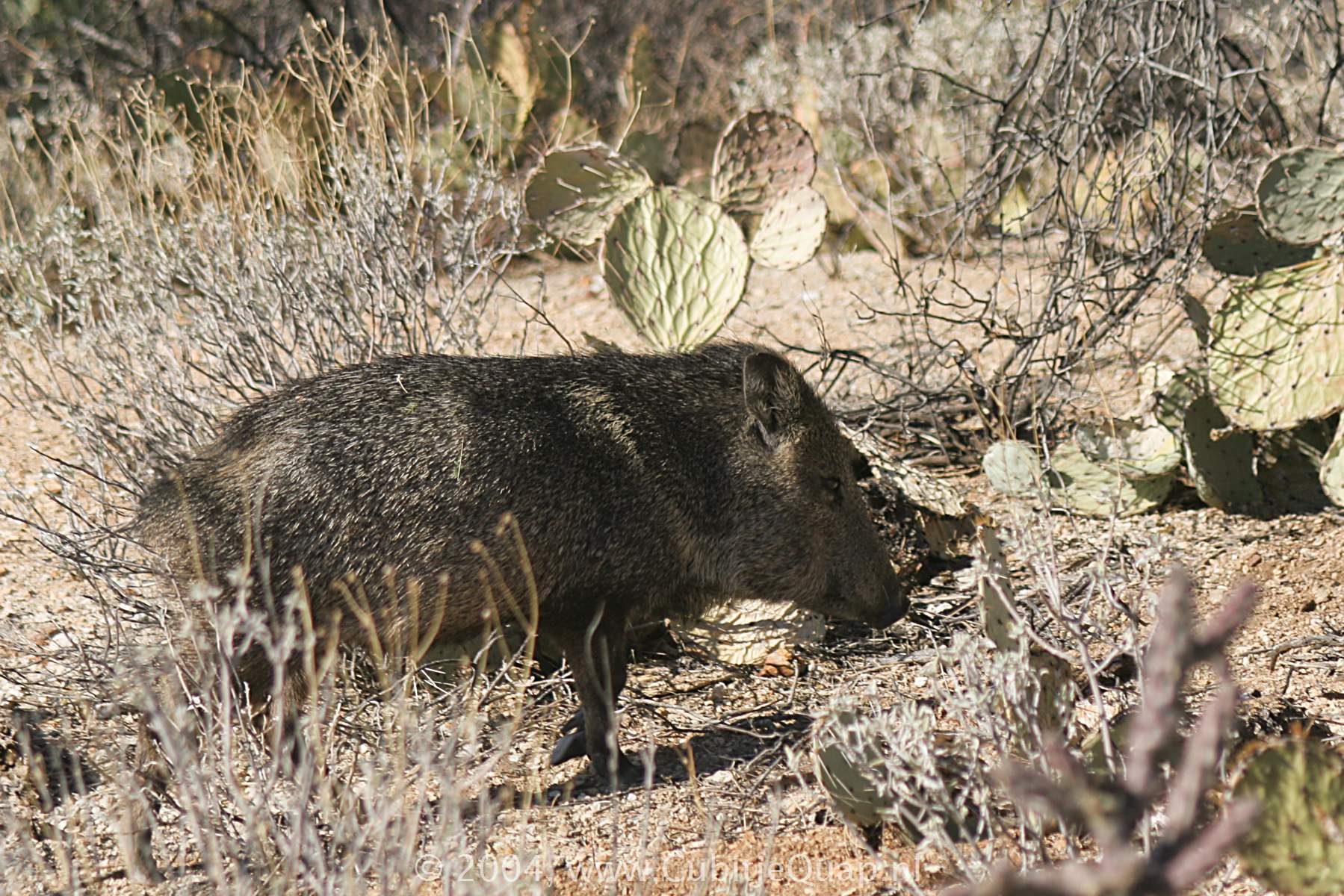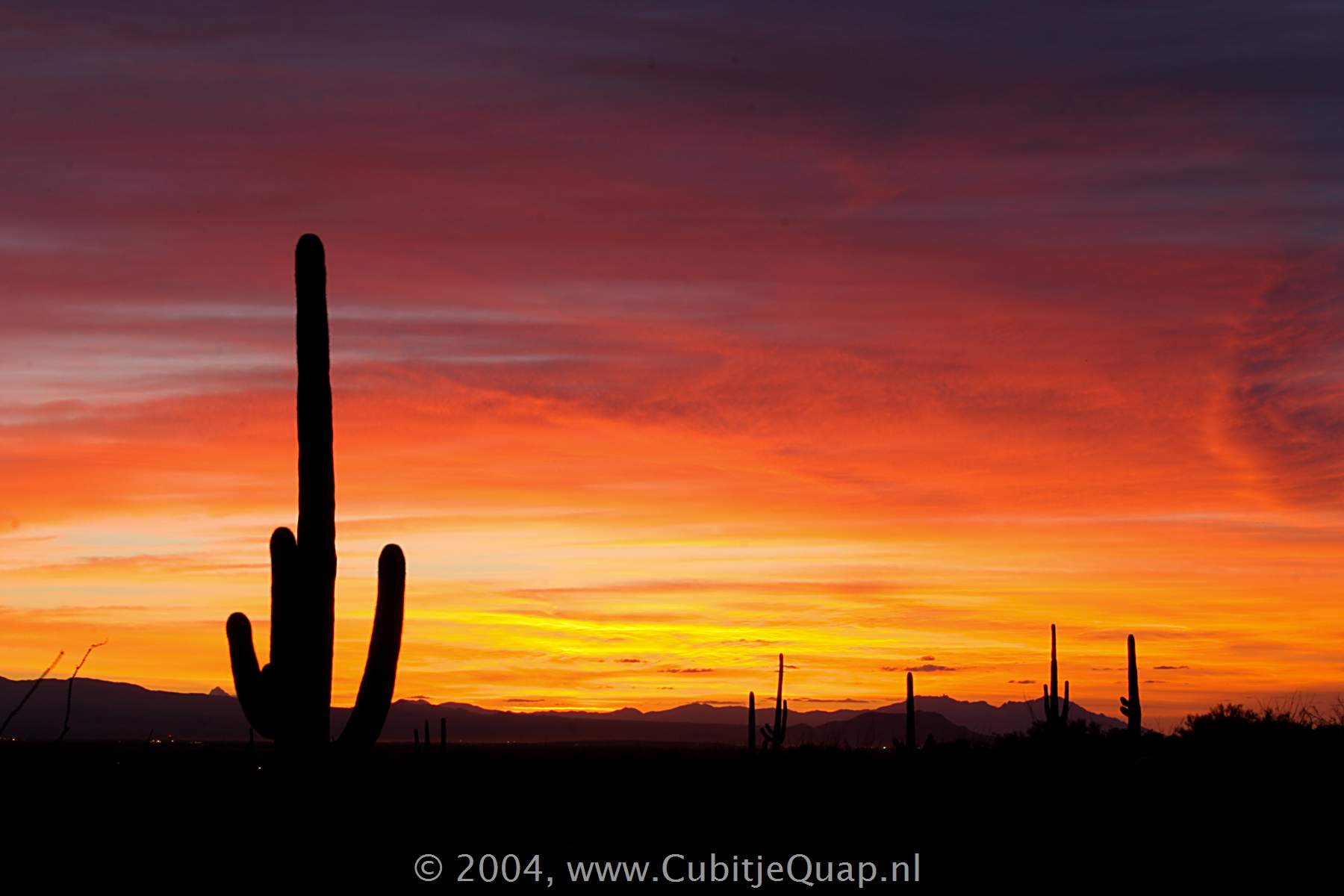The Rincon Mountain District of Saguaro National Park ranges from an elevation of 2,670 ft to 8,666 ft and contains biotic communities. These include (starting from the lowest elevation): desert scrub, desert grassland, oak woodland, pine-oak woodland, pine forest and mixed conifer forest.
Average annual precipitation is approximately 12.30 inches.
Seeds and young saguaros have the best chance for survival if they are cared for by nurse trees such as palo verde and mesquite. Saguaro seedlings that grow under these sheltering plants are shaded from the desert's intense sunlight, blanketed from winter cold, hidden from rodents, birds and other animals that eat them. Rocks provide similar protection for the young saguaros. Saguaros do best on bajadas, gently sloping outwash plains at the foot of desert mountains.
A saguaro's growth is extremely slow. Growth occurs in spurts, with most of it taking place in the summer rainy season each year. By the end of a year, the saguaro seedling may measure only 1/4 inch. After 15 years, the saguaro may be barely a foot tall. At about 30 years saguaro can begin to flower and produce fruits. By 50 years, the saguaro may be as tall as 7 feet. After about 75 years, it may sprout its first branches or "arms." The branches begin as prickly balls, then extend out and upward.
By 100 years the saguaro may have reached 25 feet. Saguaros that live 150 years or more attain the grandest size, towering as much as 50 feet and weighing 8 tons, sometimes more, dwarfing every other living thing in the desert. These are the largest cacti in the United States. Their huge bulk is supported by a strong but flexible cylinder-shaped framework of long woody ribs.
Saguaros may die of old age, but they also die of other causes. Animals eat the seeds and seedlings, lightning and winds kill large saguaro, and severe droughts weaken and kill all ages. The saguaro is vulnerable during every stage of its life.


